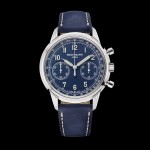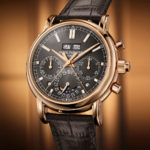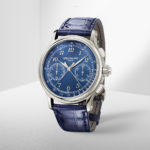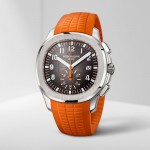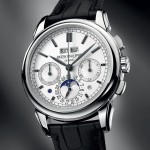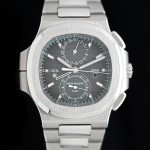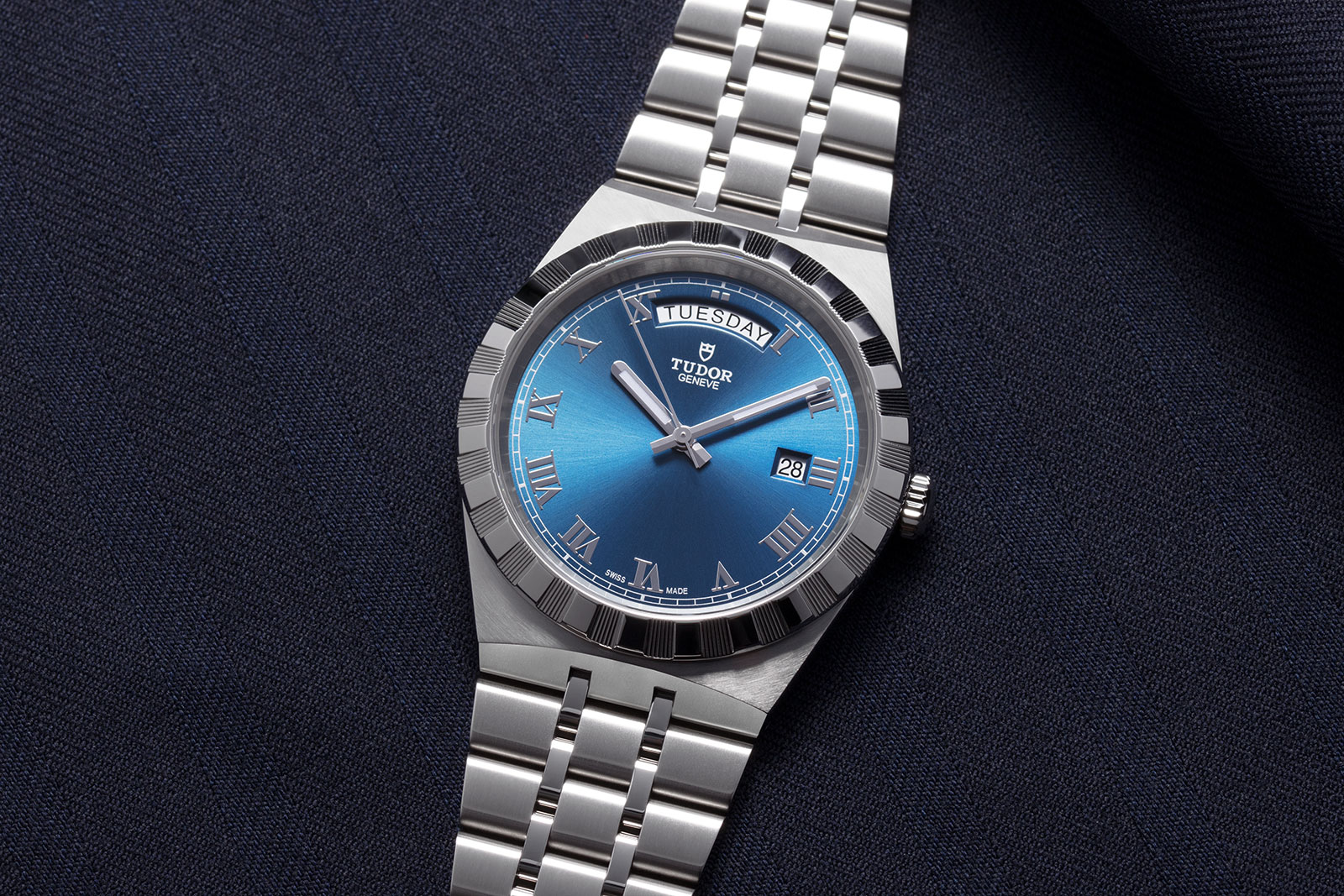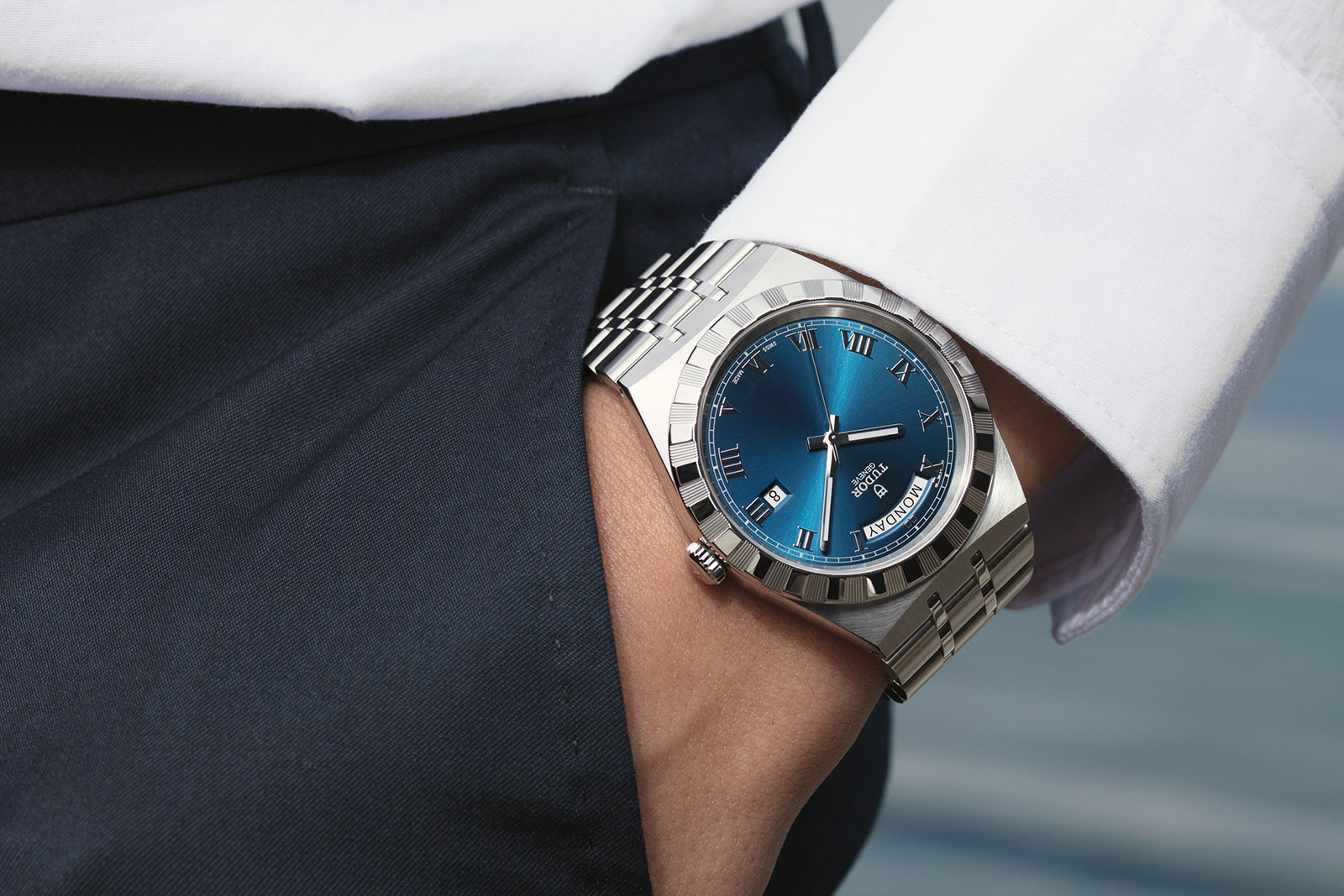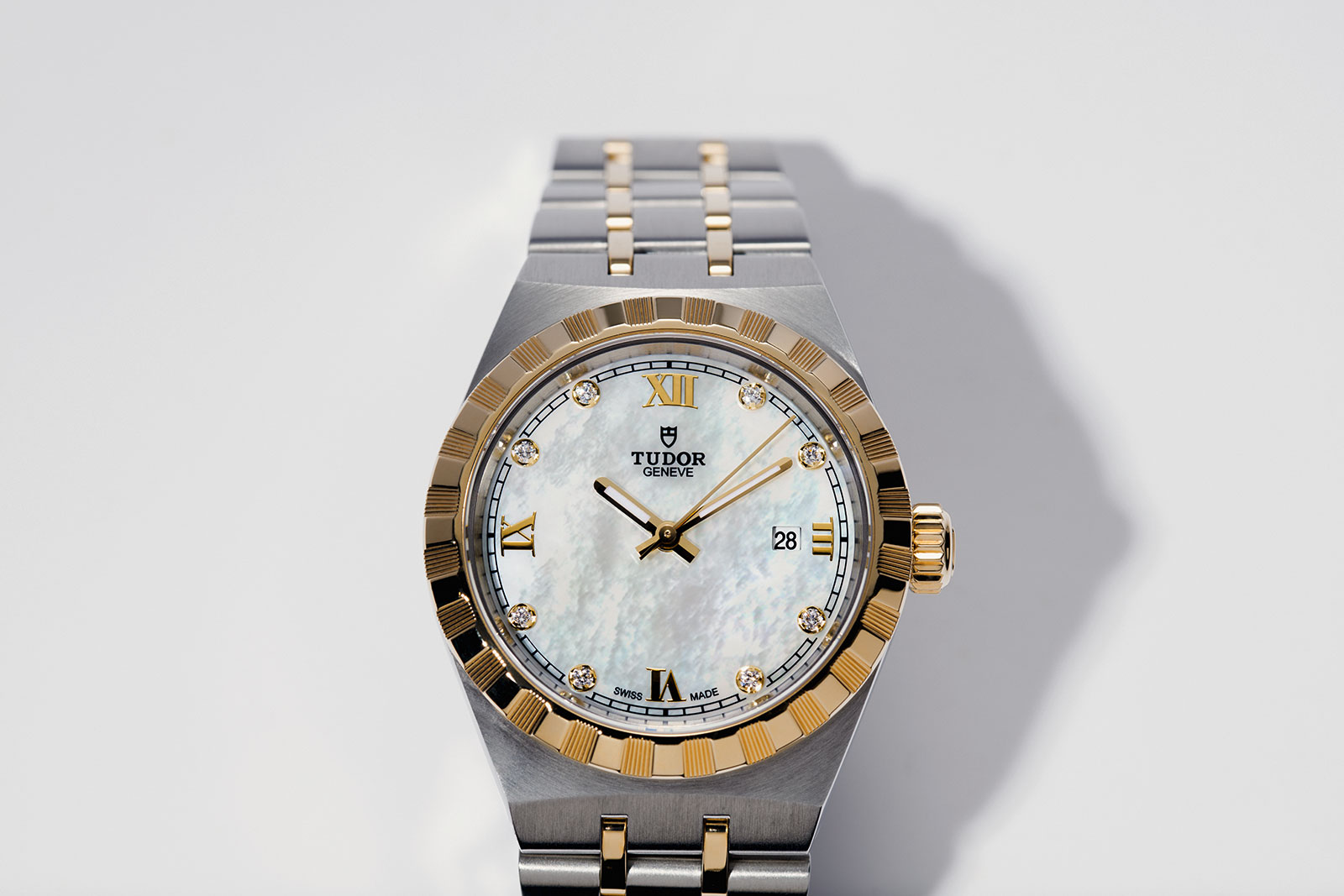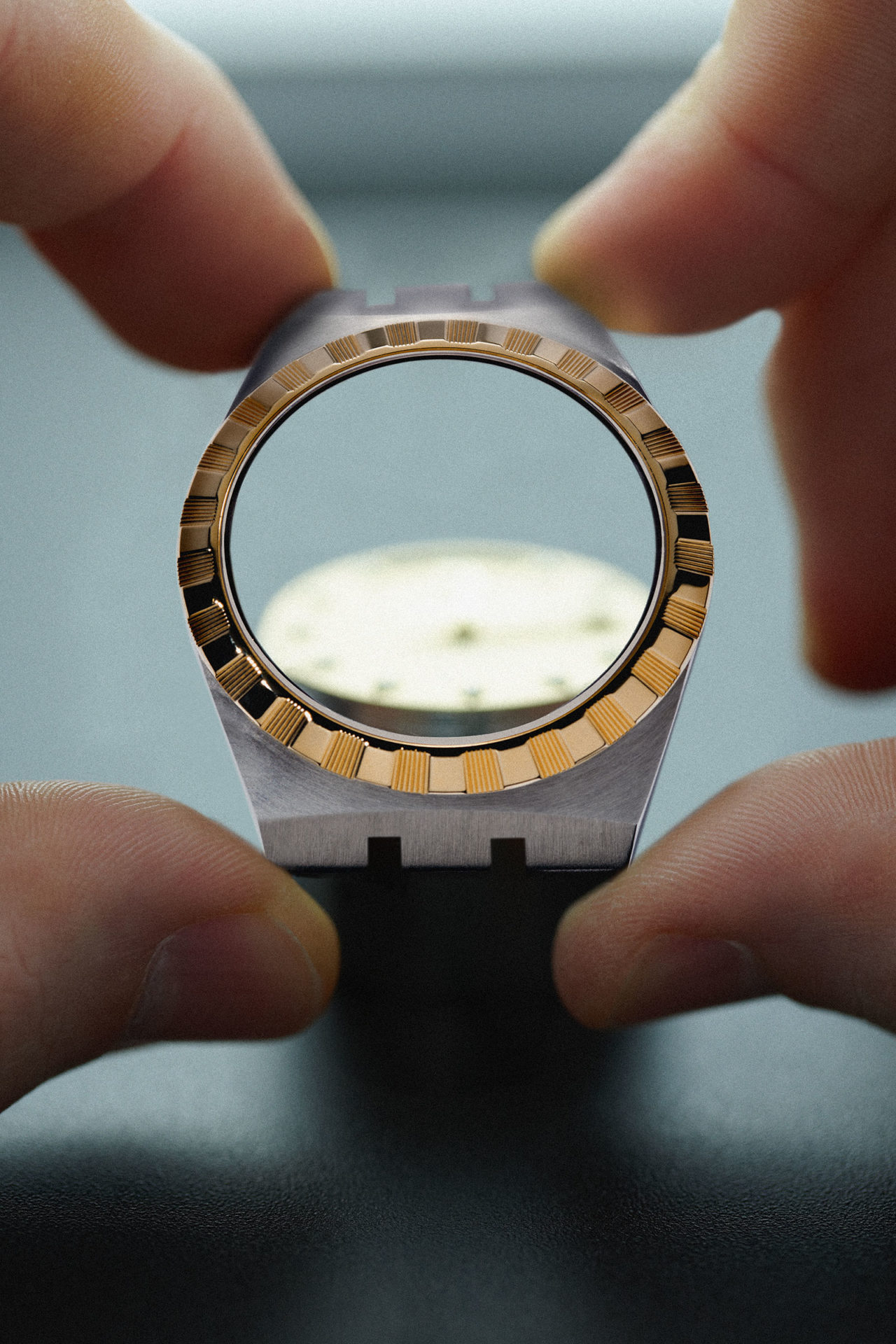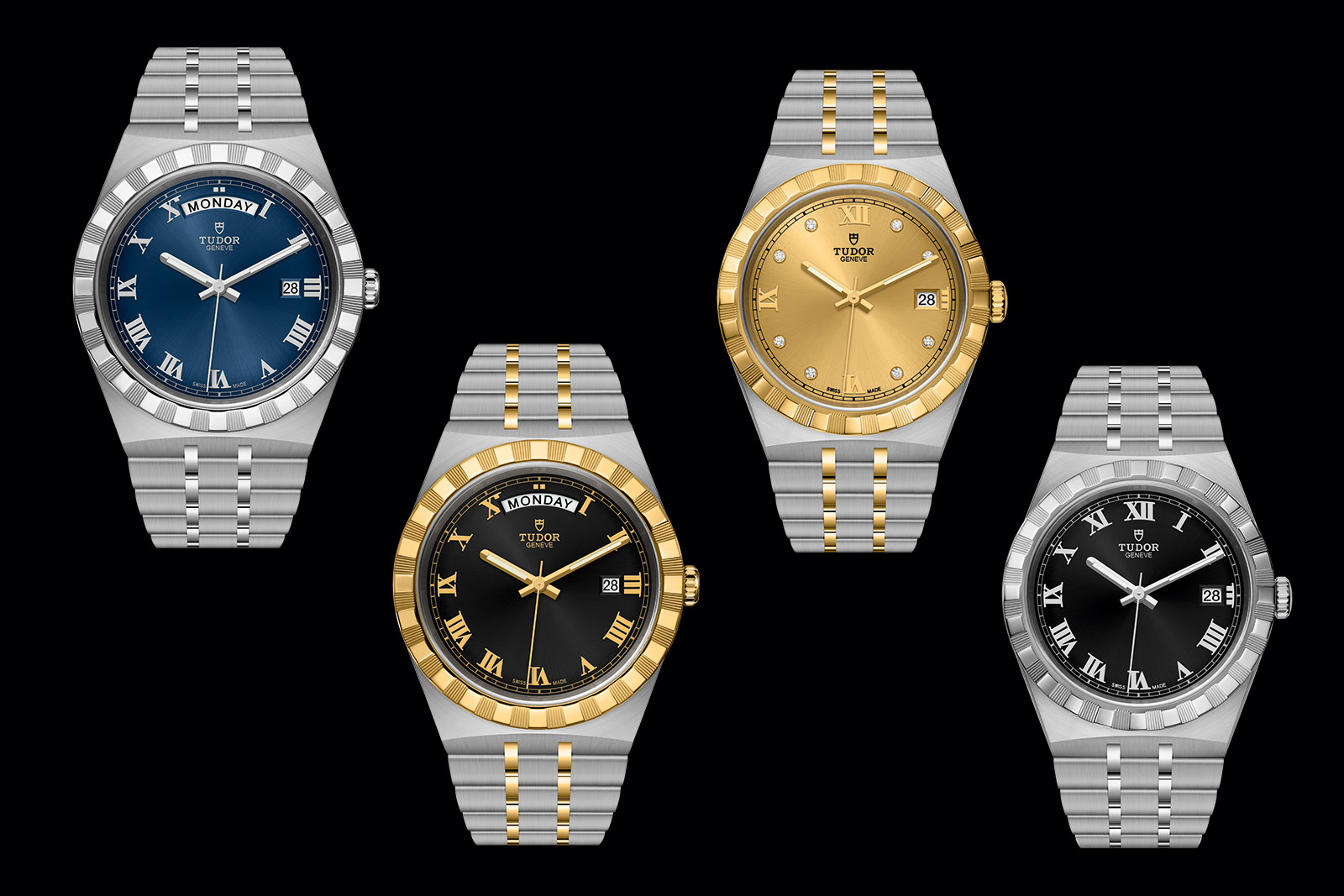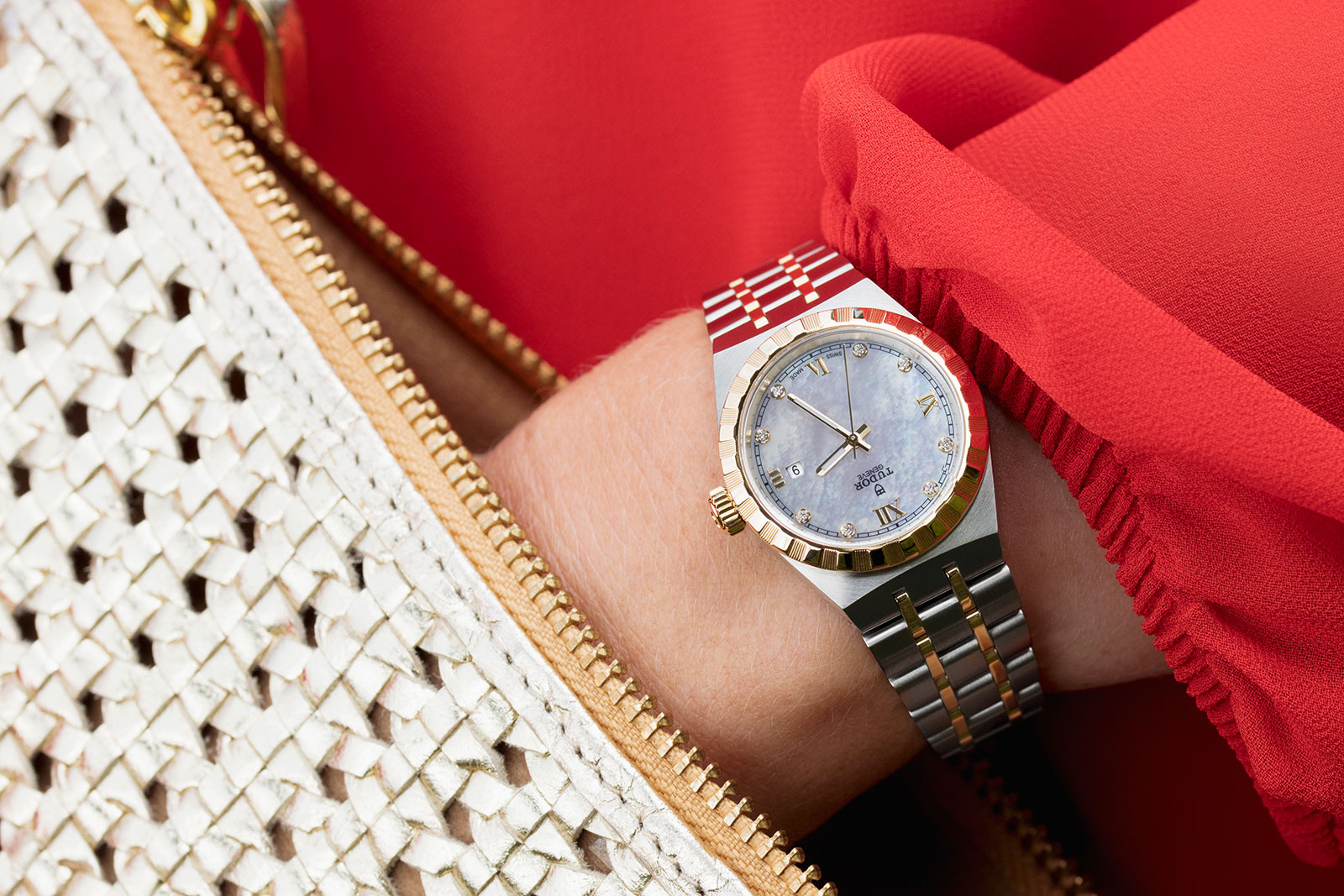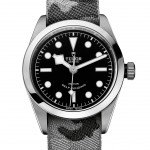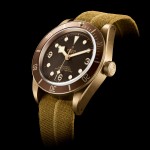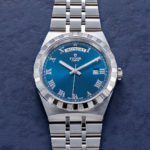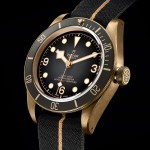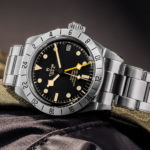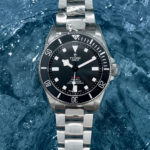Up Close: Patek Philippe Ref. 5370P-011 Split-Seconds Chronograph
Excellent, excellent details.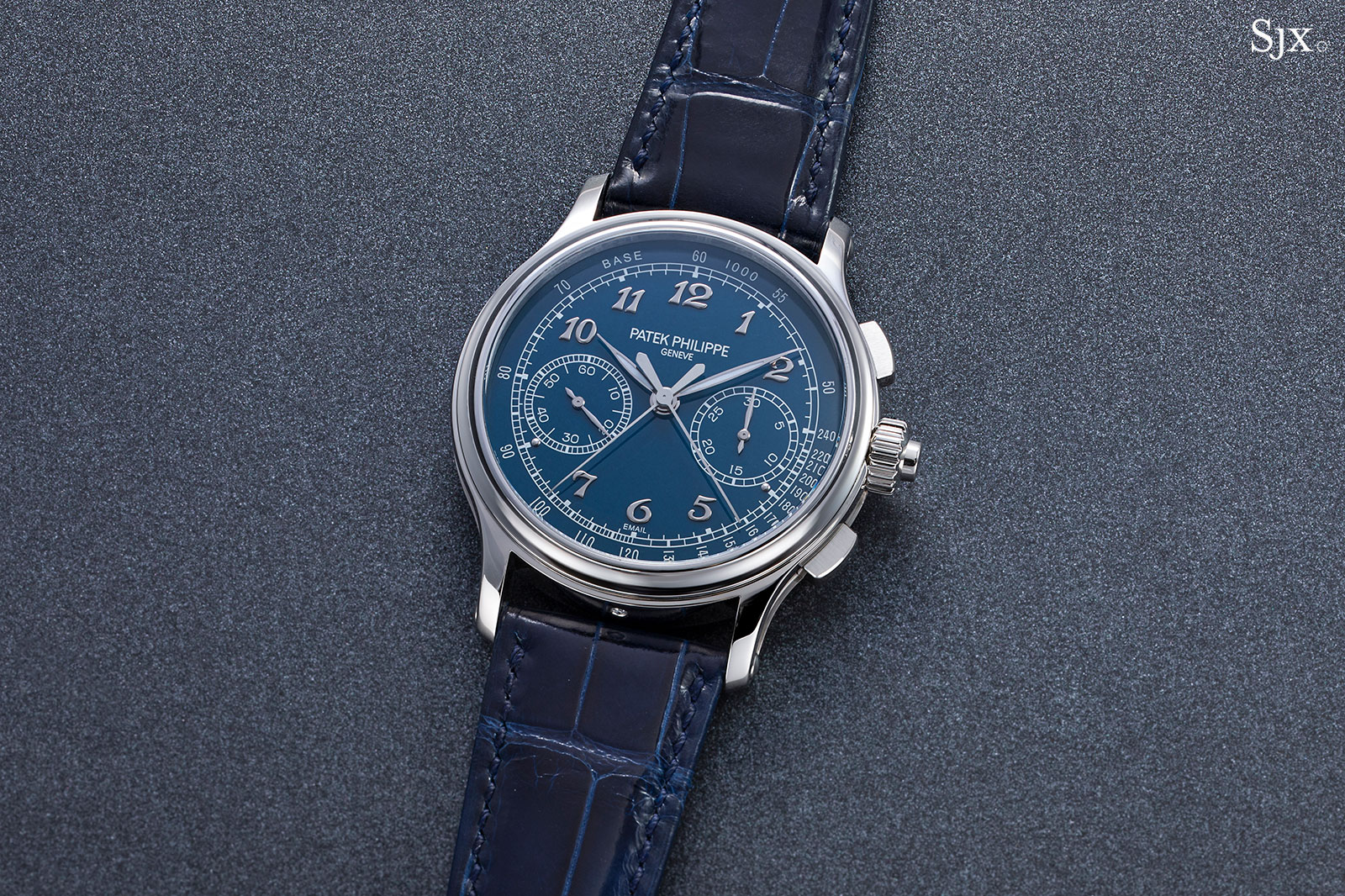
With Baselworld 2020 cancelled and then some, Patek Philippe has been progressively rolling out its new launches, including a trio of “Grand Complications” in mid July (and hints of a brand-new complication at the end of the year).
All three new complications are variants of existing models, with the crowd favourite being the Ref. 5370P-011 Split-Seconds Chronograph. The new ref. 5370P-011 has a blue grand feu enamel dial and replaces the original, black-dial model that made its debut in 2015 as the ref. 5370P-001.
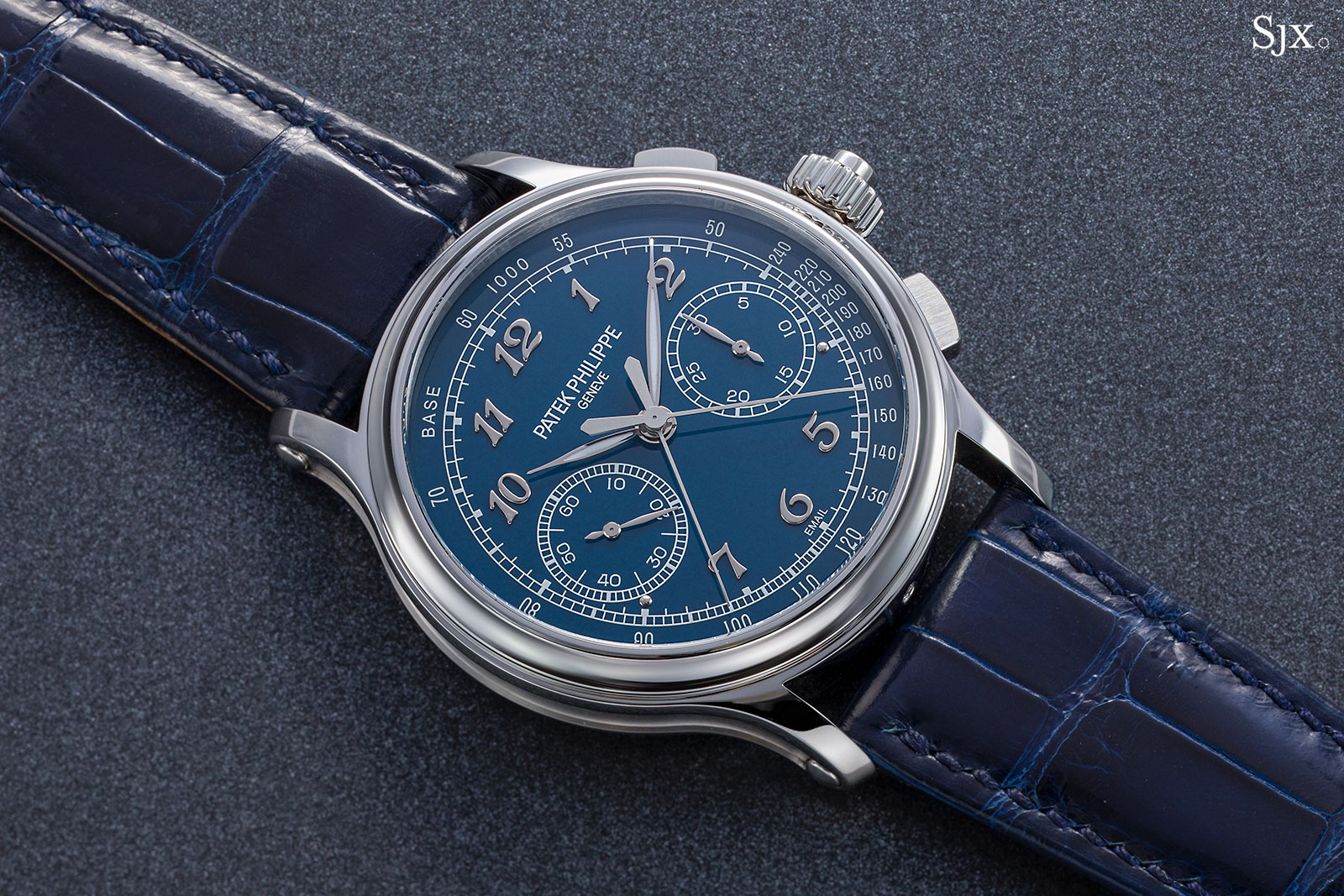
The ref. 5370P-011
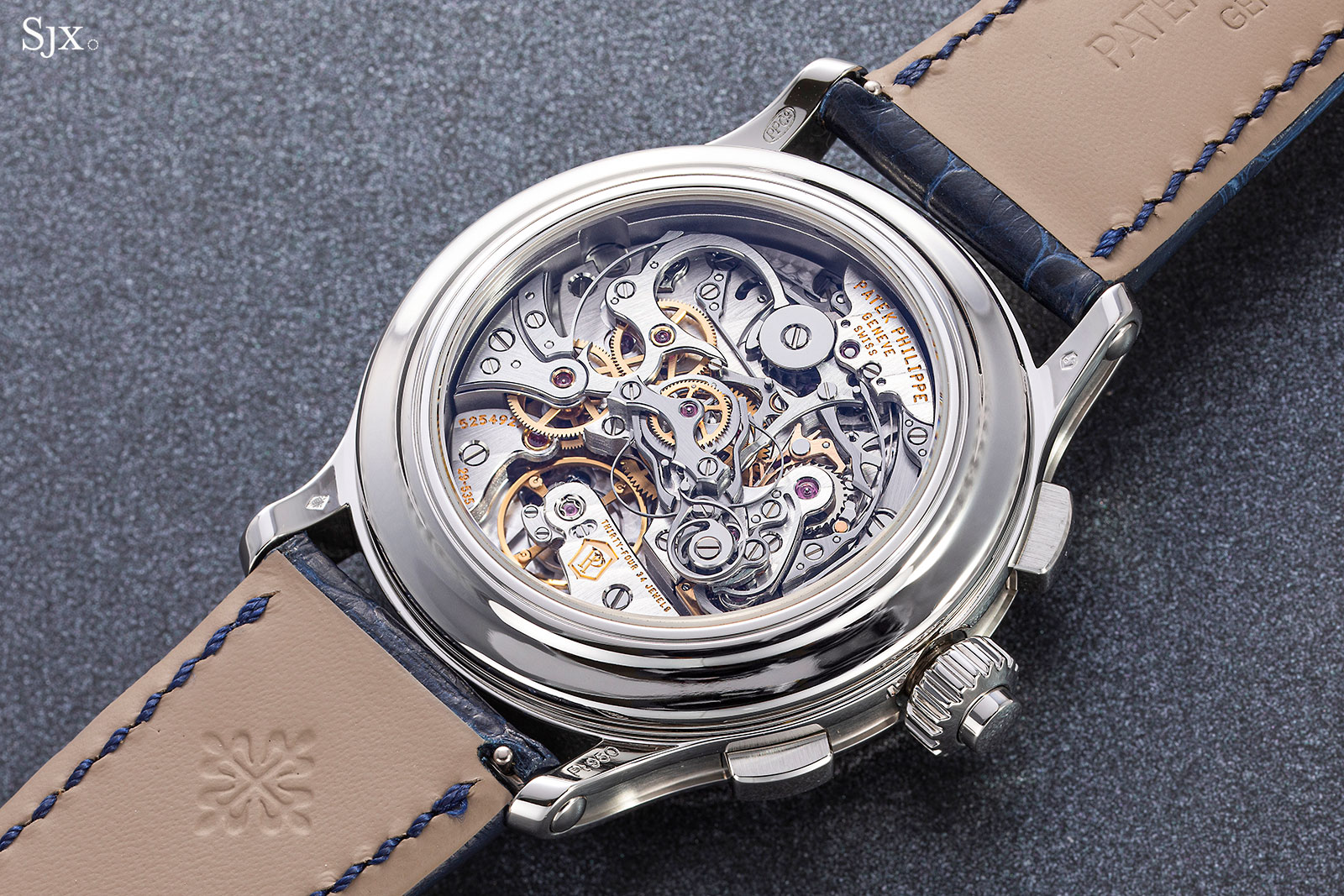
The cal. CHR 29-535 PS
Initial thoughts
The only thing new about this version of the ref. 5370 versus the first-generation model is the colour of the enamel dial. So everything that was good about the original model (classical design, dial and case quality, movement aesthetics), remain good. Needless to say, so do the weaknesses (mismatched finish on seconds hand, details of movement decoration).
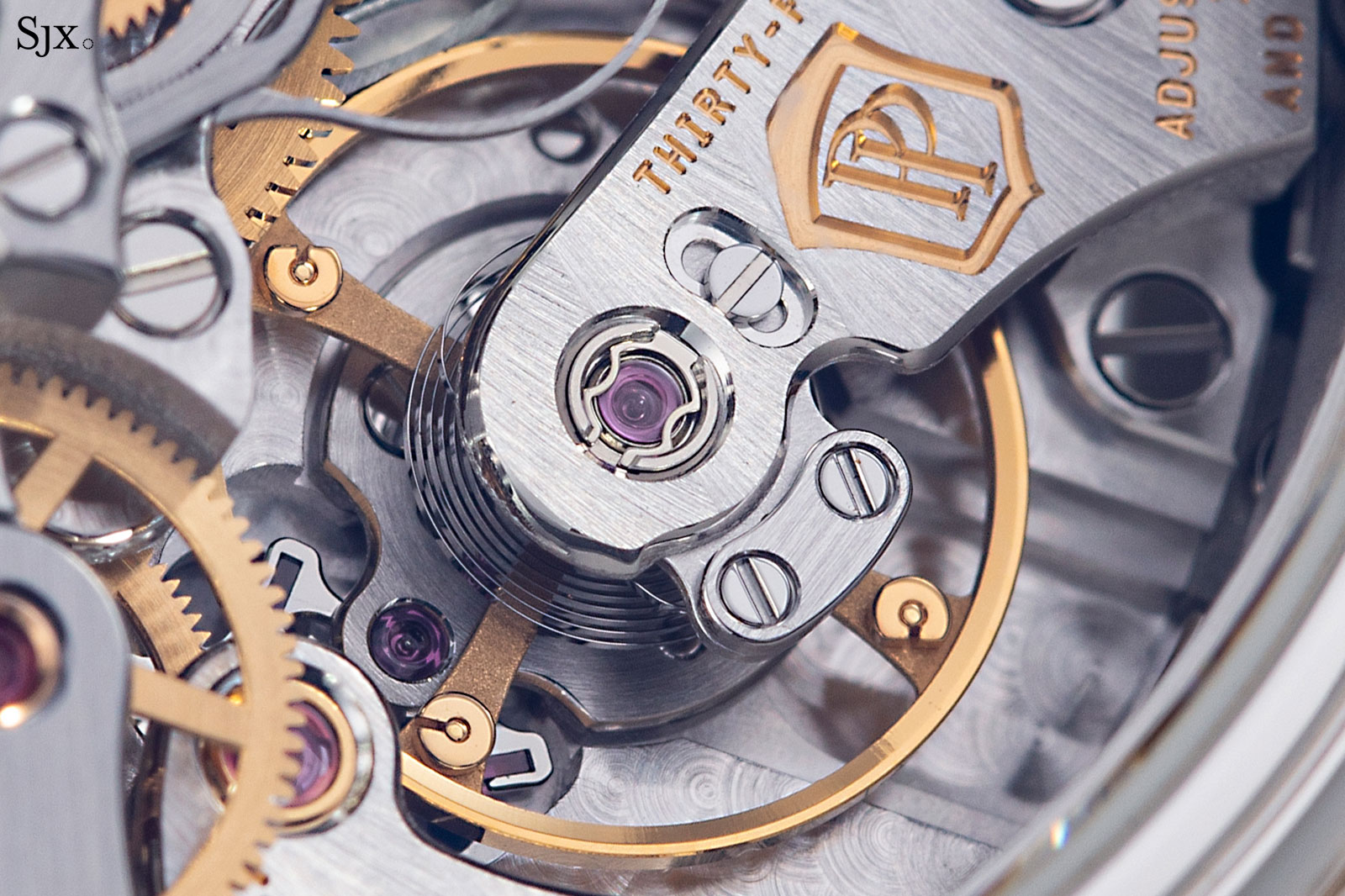
The balance assembly
Though not a dress watch, the original ref. 5370 was dressed in black-tie colours of black and silver that gave it a stately bearing, but also a slightly old-fashioned feel. With the enamel dial in blue – it’s a gentle, muted blue – the new ref. 5370 looks more modern and casual, which is a good thing if you’re looking for something less formal.
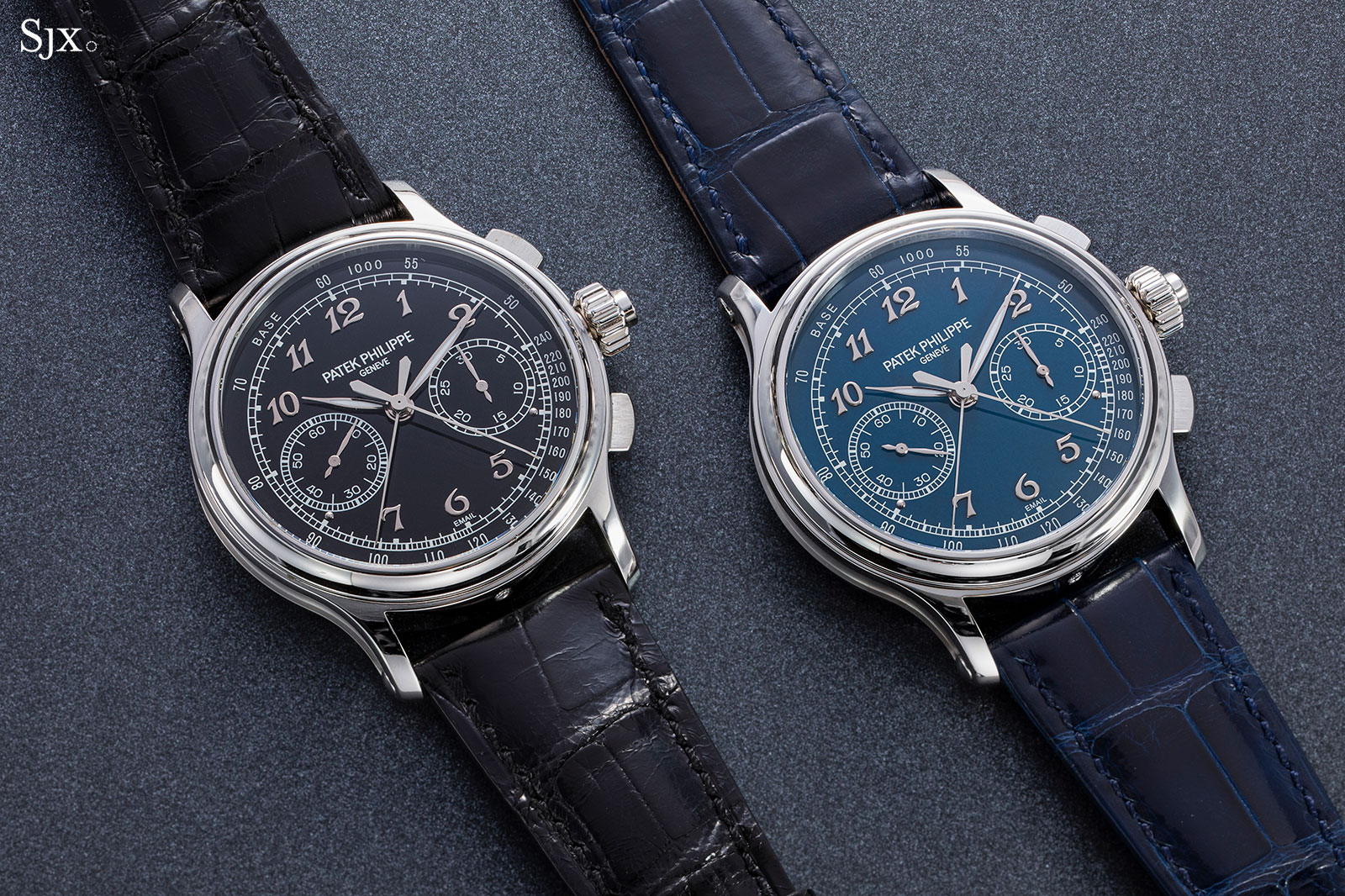
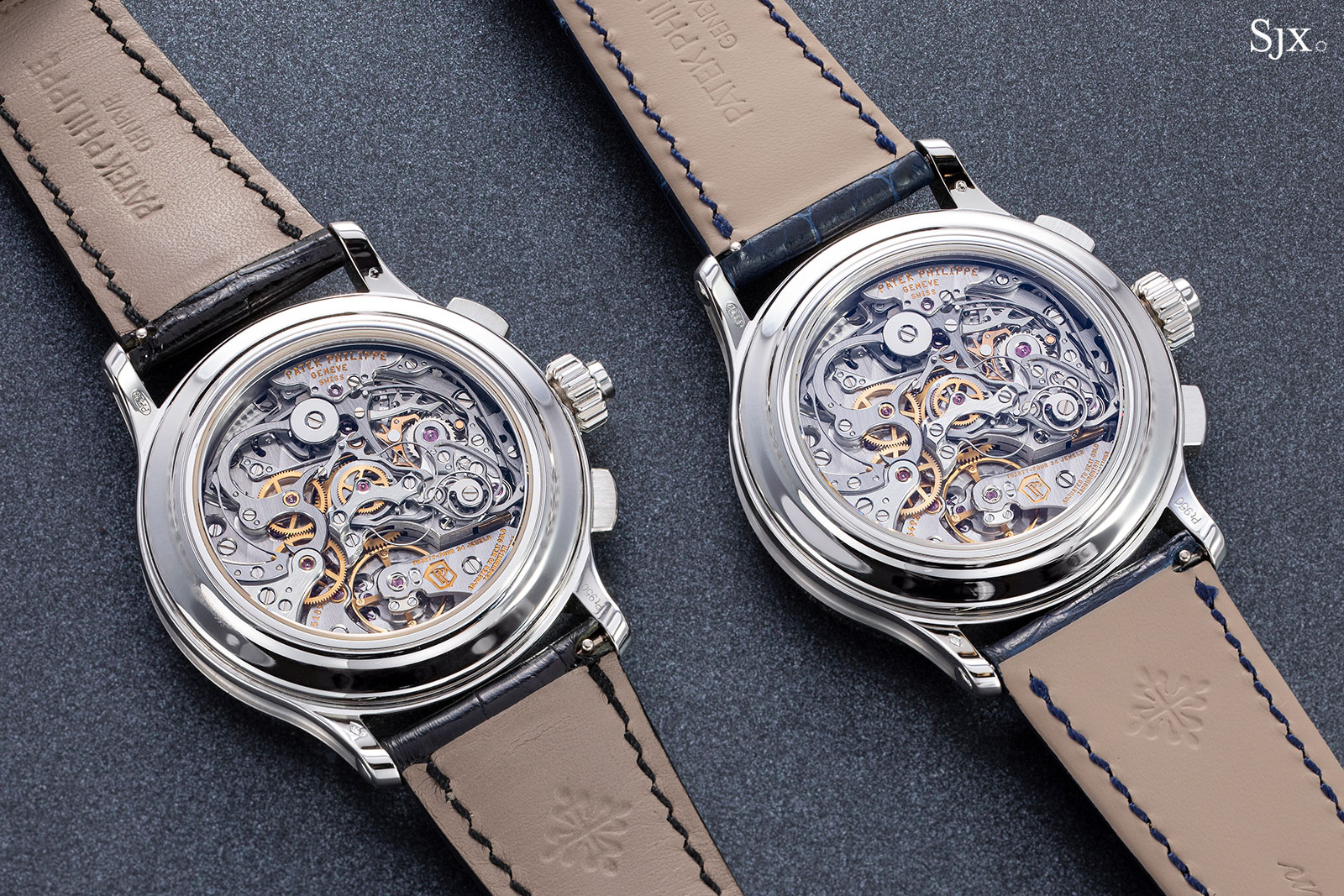
The outside
Though a large 41 mm in diameter, the case of the ref. 5370 reproduces the proportions of the ref. 1436, a split-seconds chronograph that was in production from 1938 to about 1970.
Like Patek Philippe’s better known chronograph watches of the period, namely the ref. 130 and 1518, the ref. 1436 split-seconds had strikingly wide lugs that were long and fairly narrow. The ref. 5370 captures that look well – and it is a very good look – though it does look a bit big on the wrist.
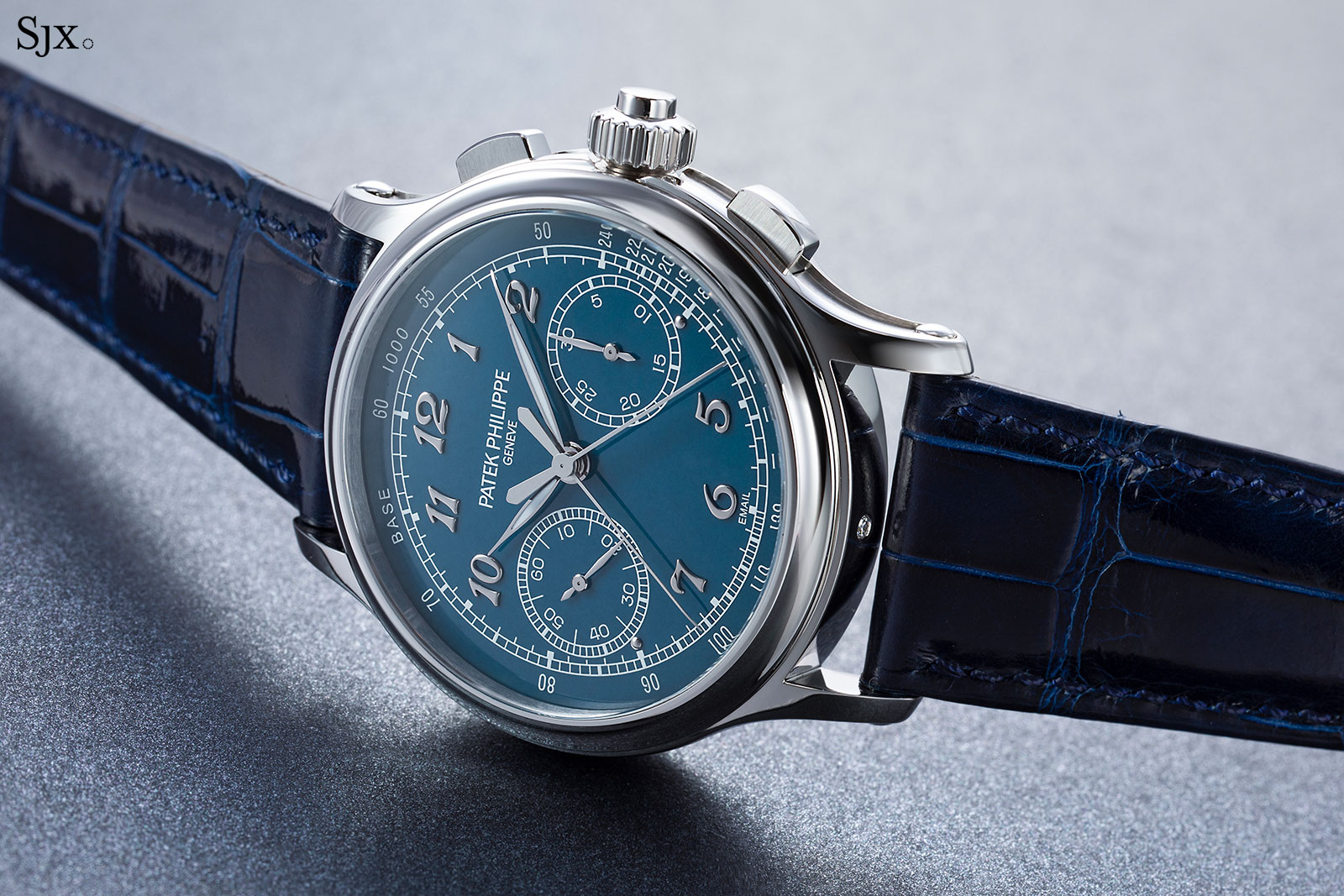
And in typical Patek Philippe style, the ref. 5370 case channels the spirit of the original while having various modern upgrades, in construction naturally, but also with subtle flourishes on the case flanks.
The sides of the case are recessed and linearly brushed, with a raised lip around the perimeter that’s polished. It’s so neatly done the case appears to be a multi-part sandwich, but it is actually a single piece that’s artfully finish. And the end of each lug is capped with a cabochon that is pressed into the case side, permanently fixing it in place like a rivet.
Because the case middle is one piece – the recessed portion and perimeter are not separate pieces – finishing the sides is a challenge. First the recess is smoothened with a file, and then brushed with a small rotary polisher like a dentist might use. The final step sees the brushed surface refined by hand with a sanding stick, essentially a small stick of soft and mildly-abrasive wood like that used for the final polishing of movement parts.
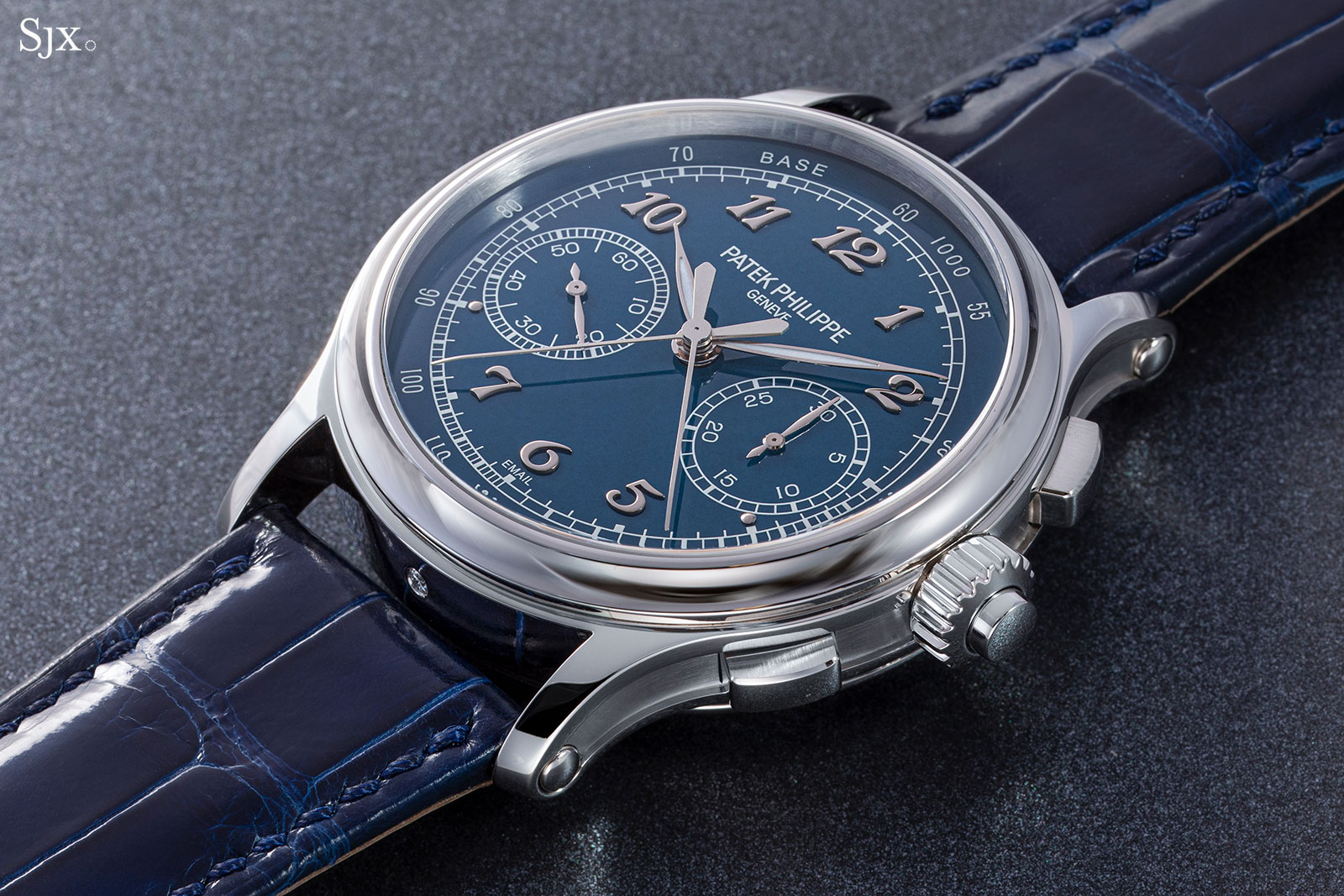
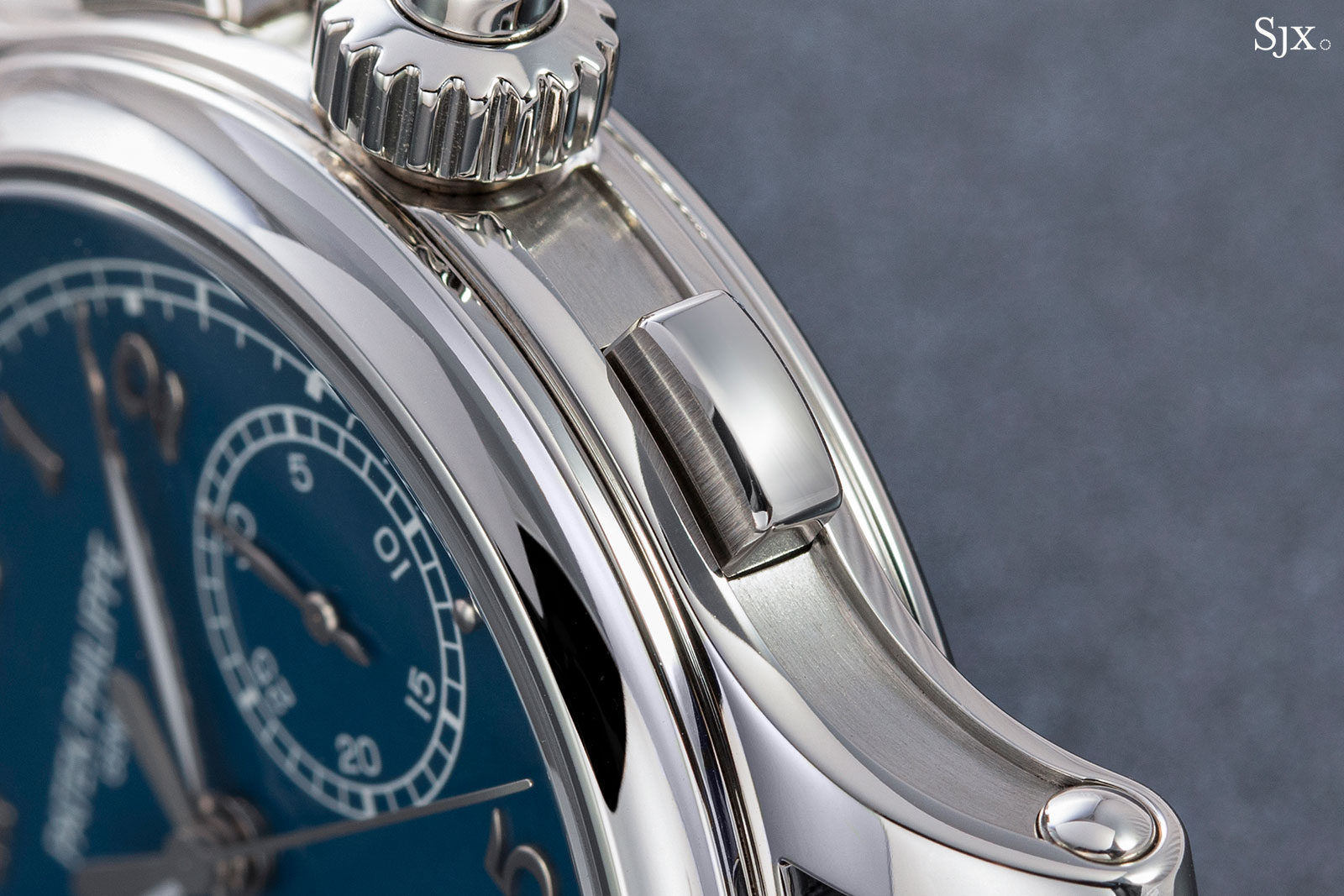
Besides the case flanks, also note the relaxed bevel on the edges of the chronograph button
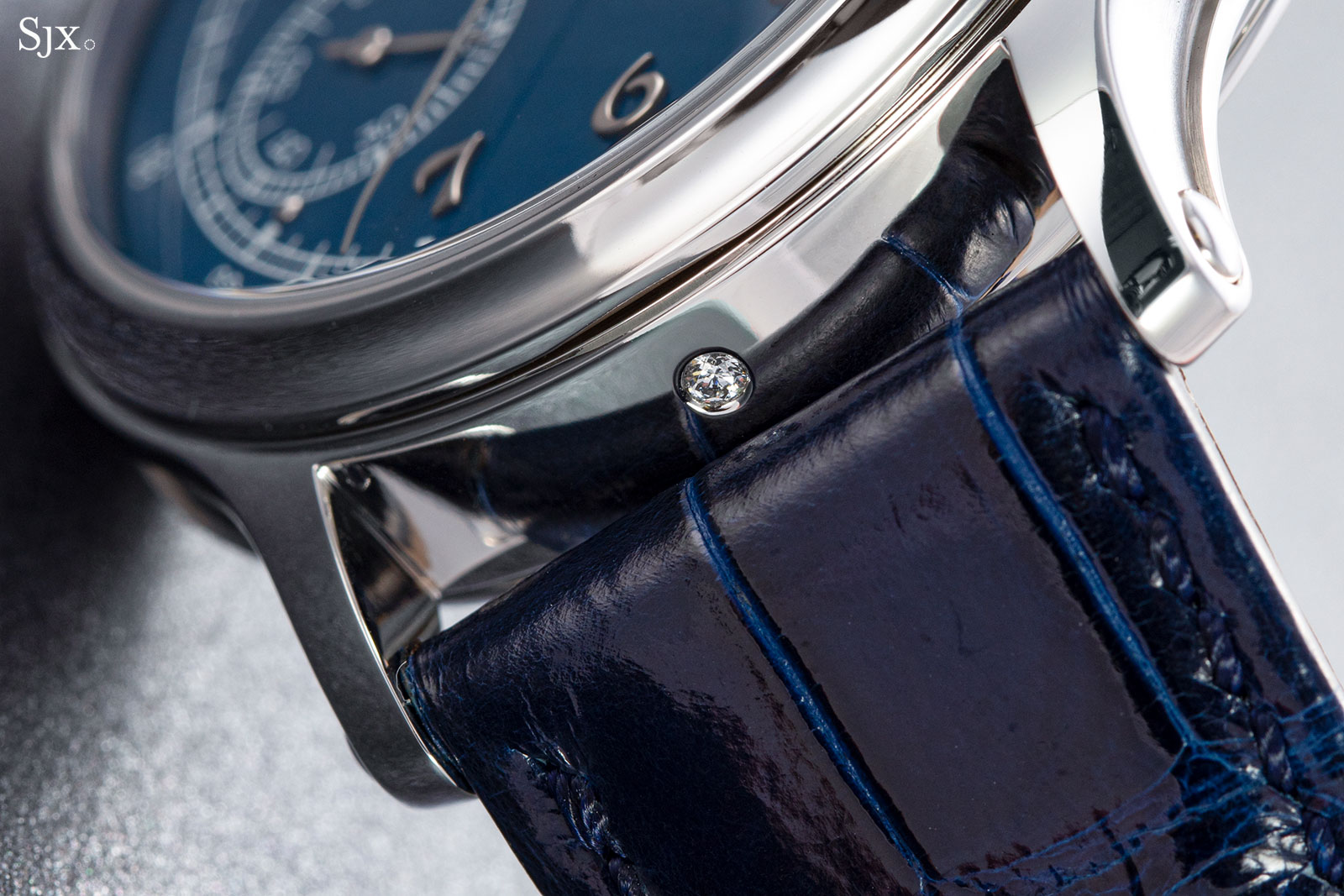
A diamond at six indicates the case is platinum
The finishing on the sides gives the case an elegant profile, especially when combined with the concave bezel and back that almost mirror each other. But the ref. 5370 is a thick watch, standing a little over 13.5 mm high.
Combined with its 41 mm diameter, the result is a watch that feels very much like a high-end modern complication, like a Lange or a smaller Greubel Forsey. So it is big and reassuringly weighty – it feels expensive – though the elegance of a vintage original is clearly lost.
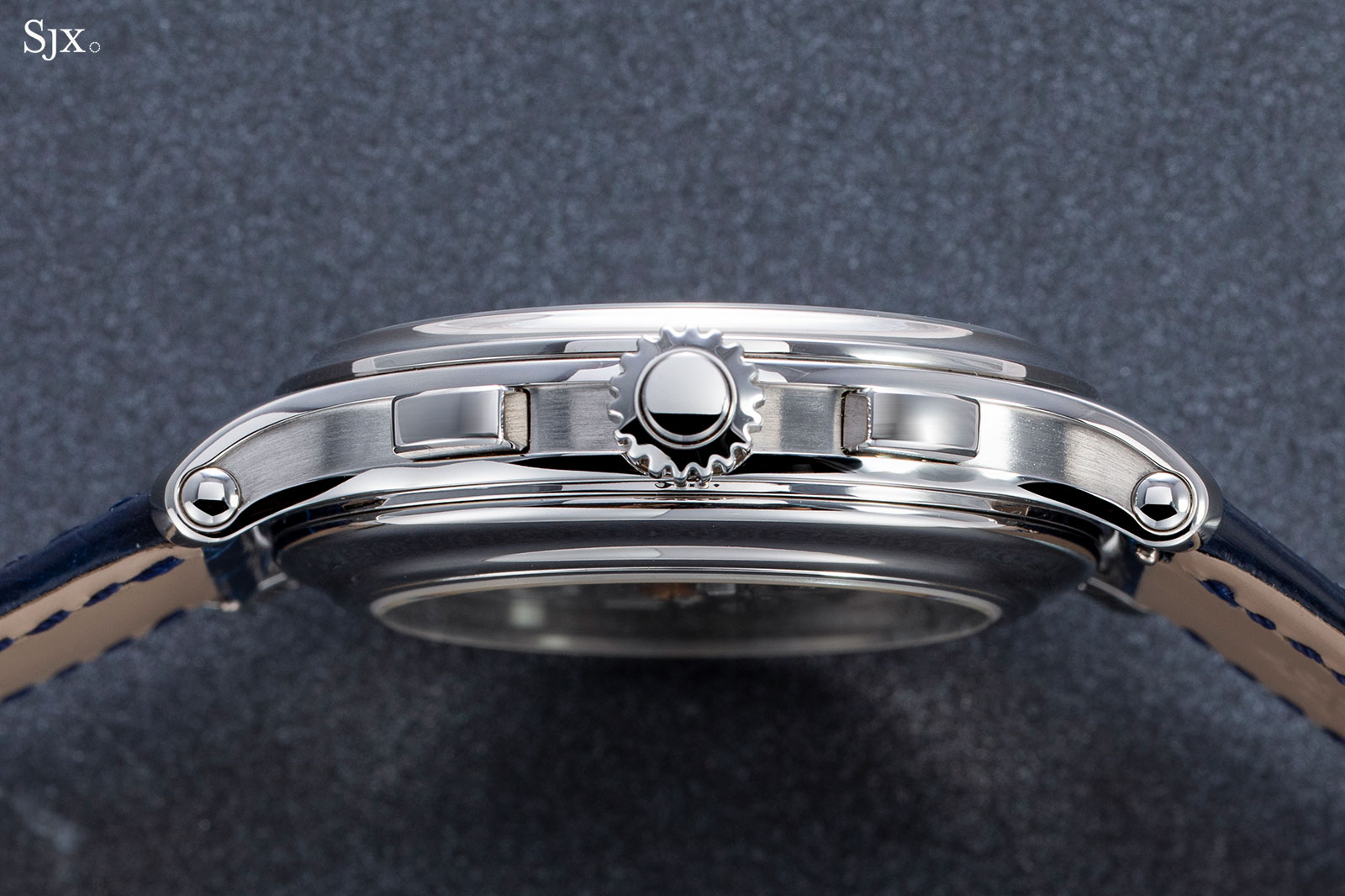
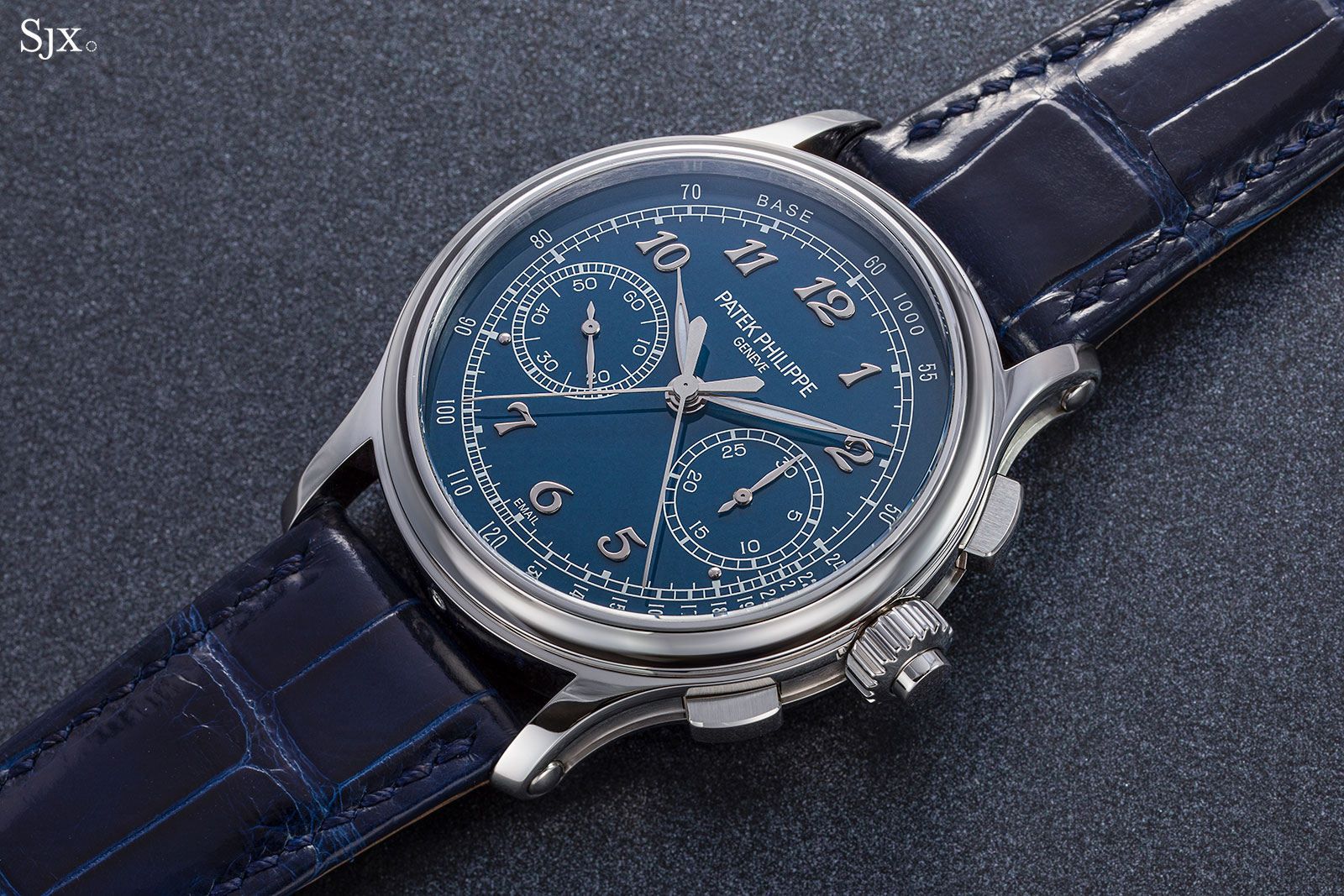
Though it is large, the dial is elegant, well proportioned, and beautifully appointed.
Executed to a high standard, the dial is a disc of 18k gold covered in glossy vitreous enamel, while the numerals and hands are 18k gold and the markings appear to be printed enamel.
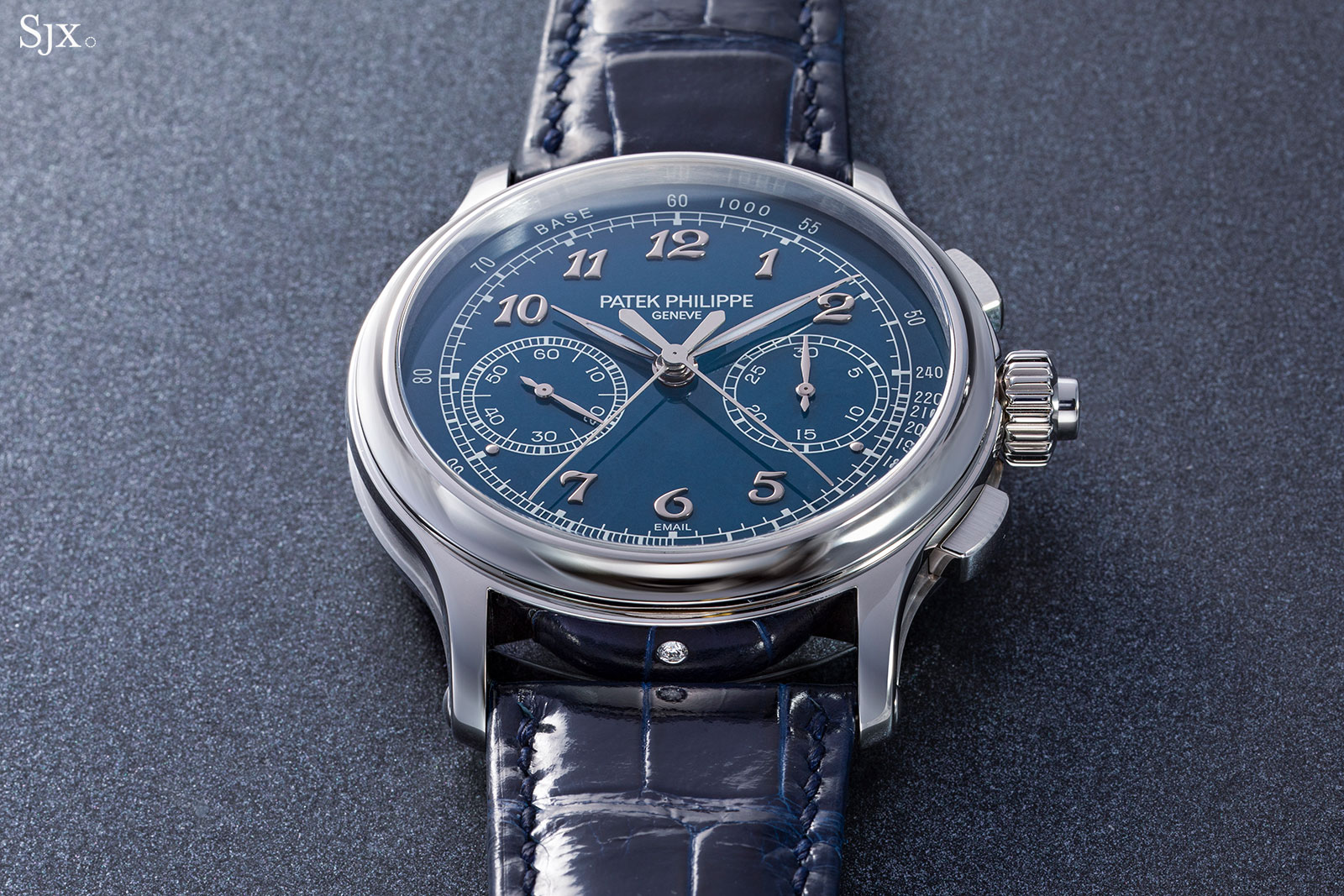
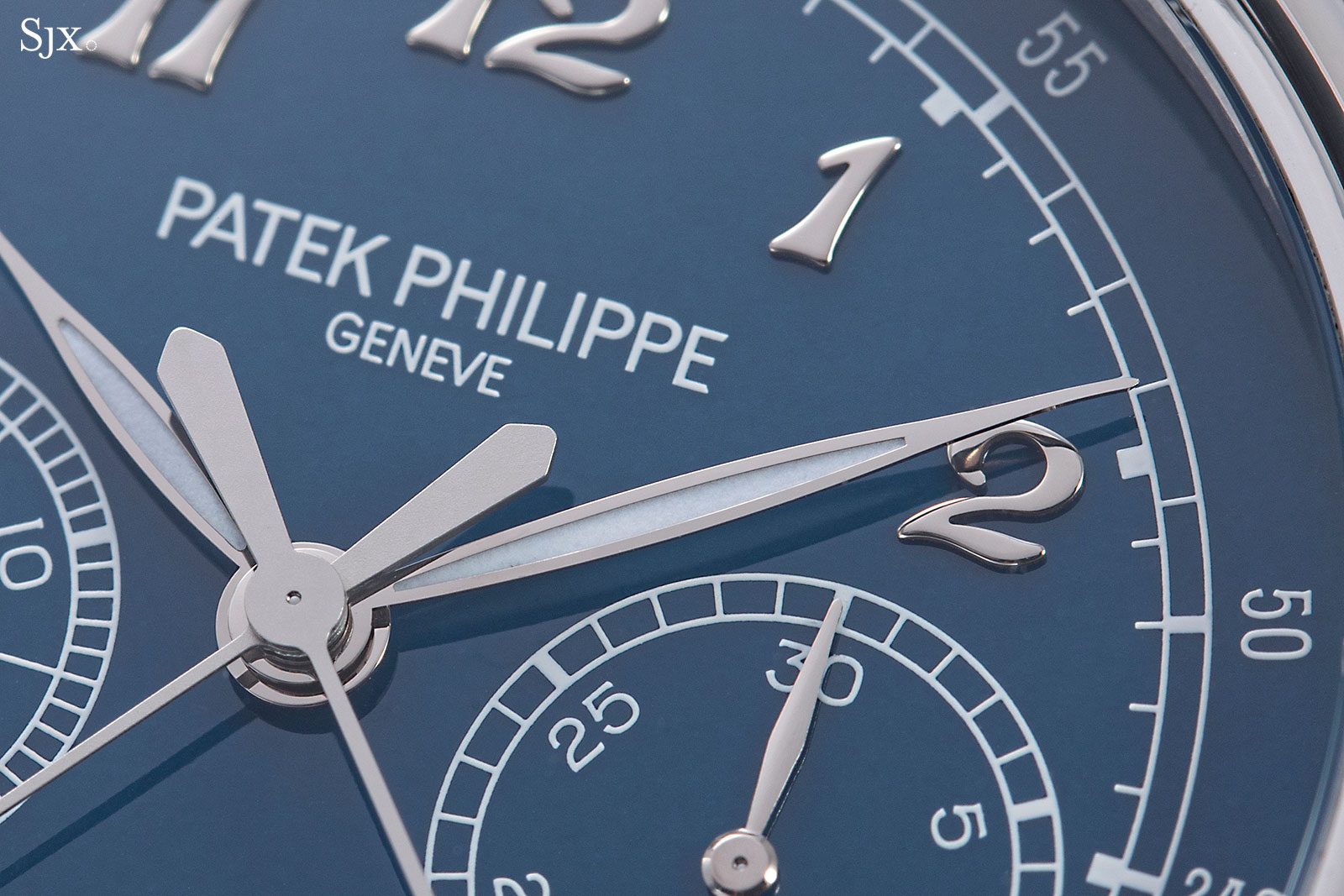
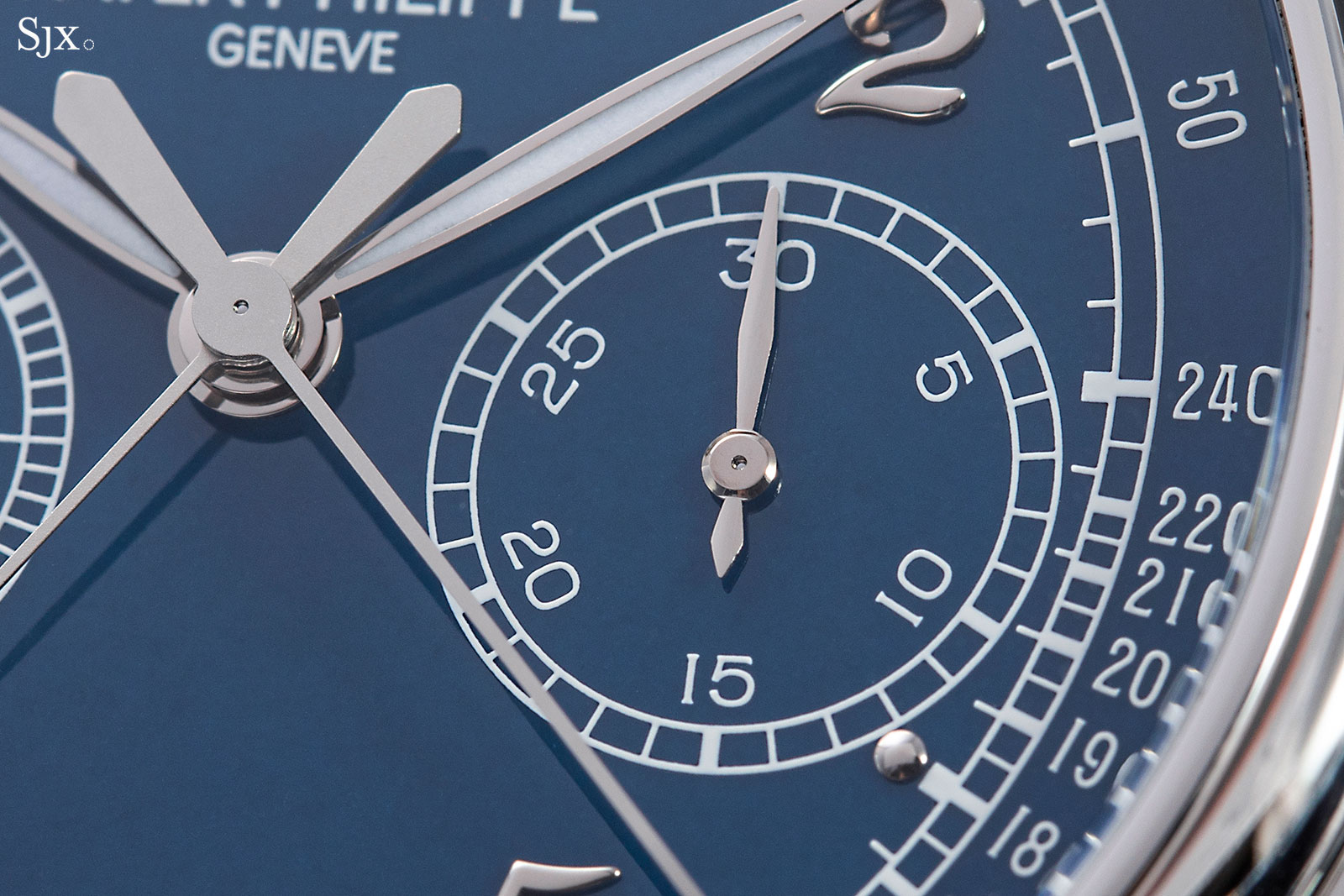
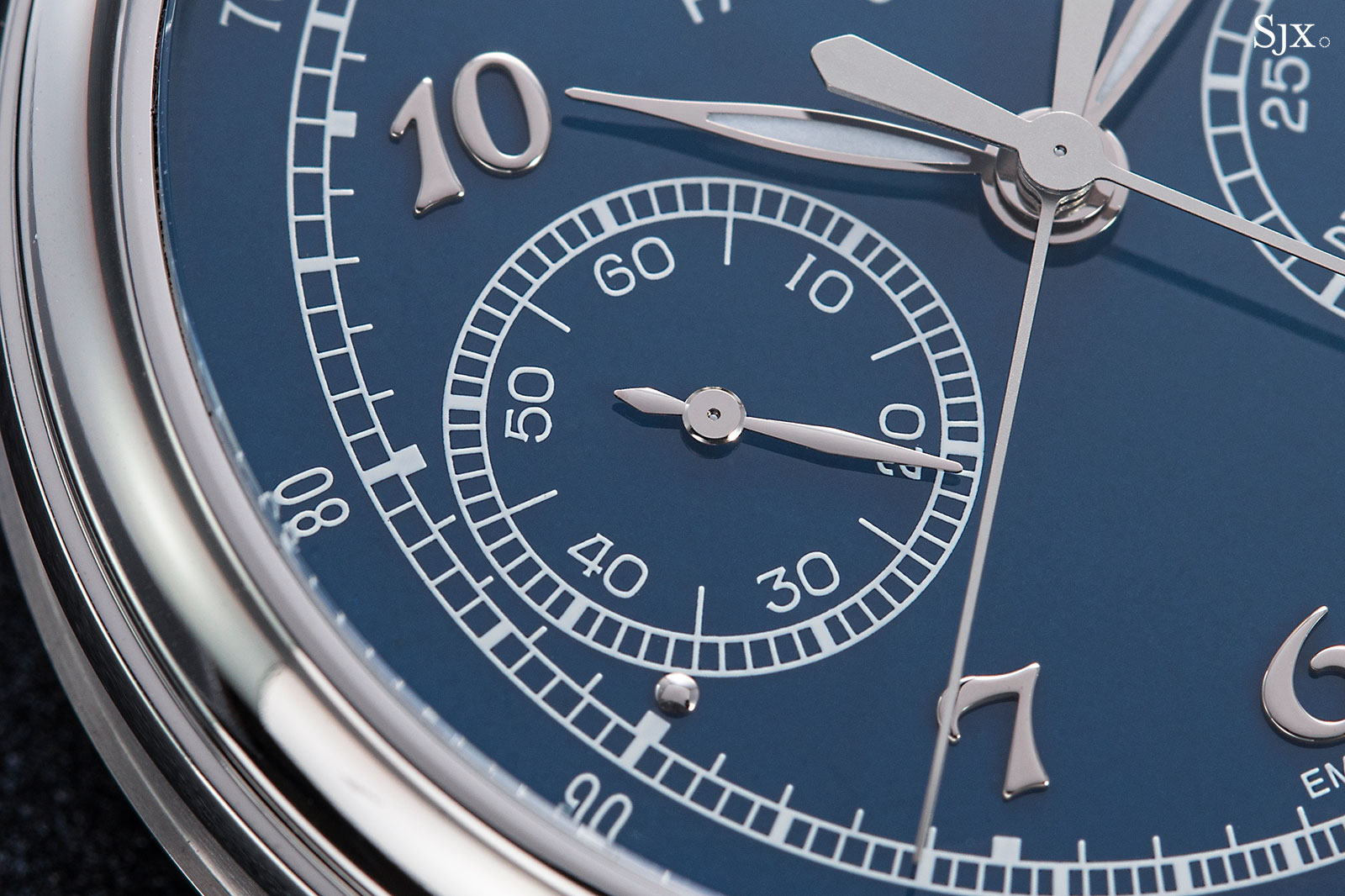
The enamel is unusual in being very smooth and almost uniform in colour, unlike older fired enamel dials that tend to have imperfections on the surface and within. Only the faintest of colour variation are visible when examined up close, and the surface is also exceptionally smooth, indicating it was probably carefully polished to a high gloss after firing.
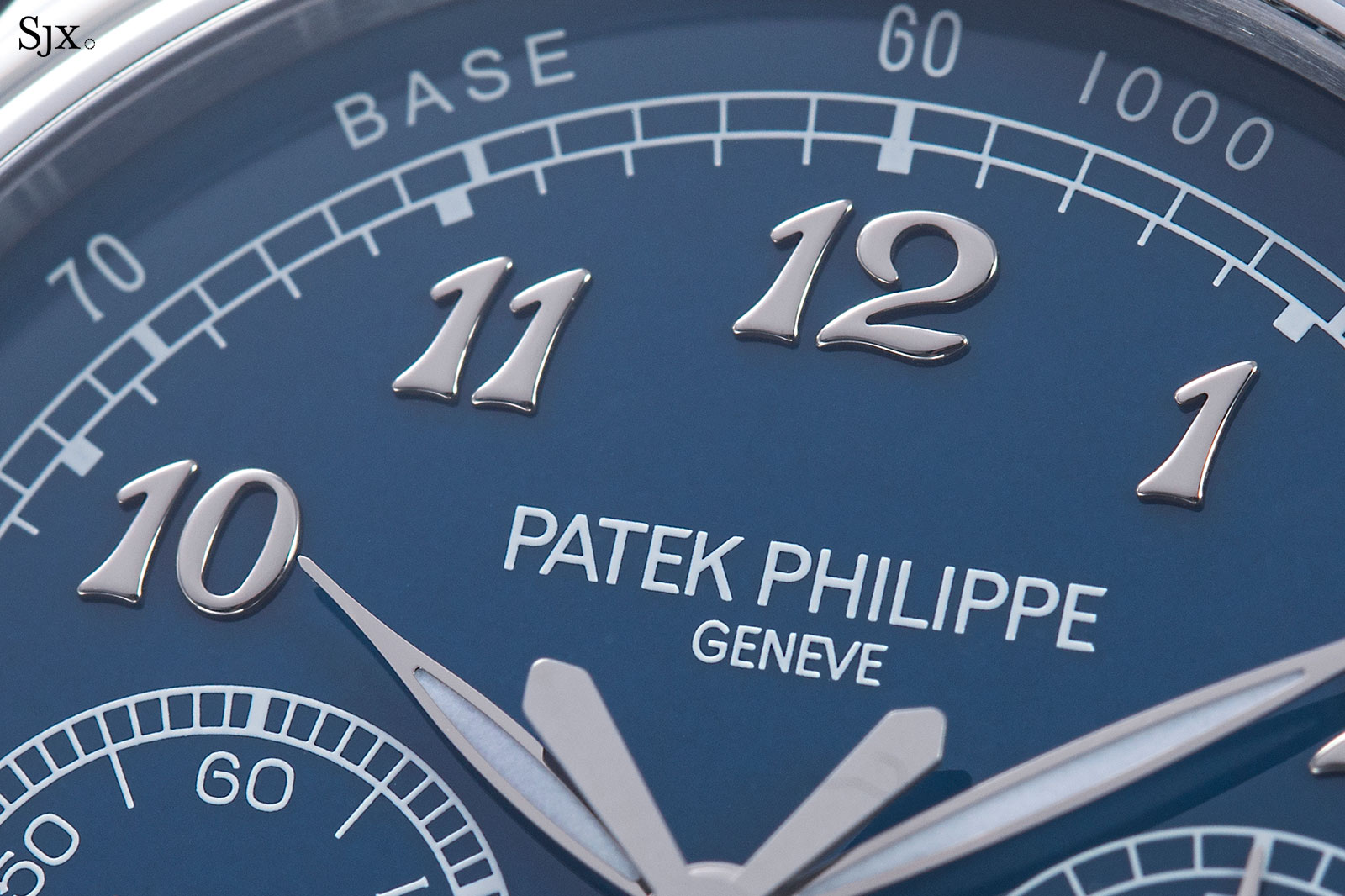
As on many other contemporary Patek Philippe watches, the logo is a little too big
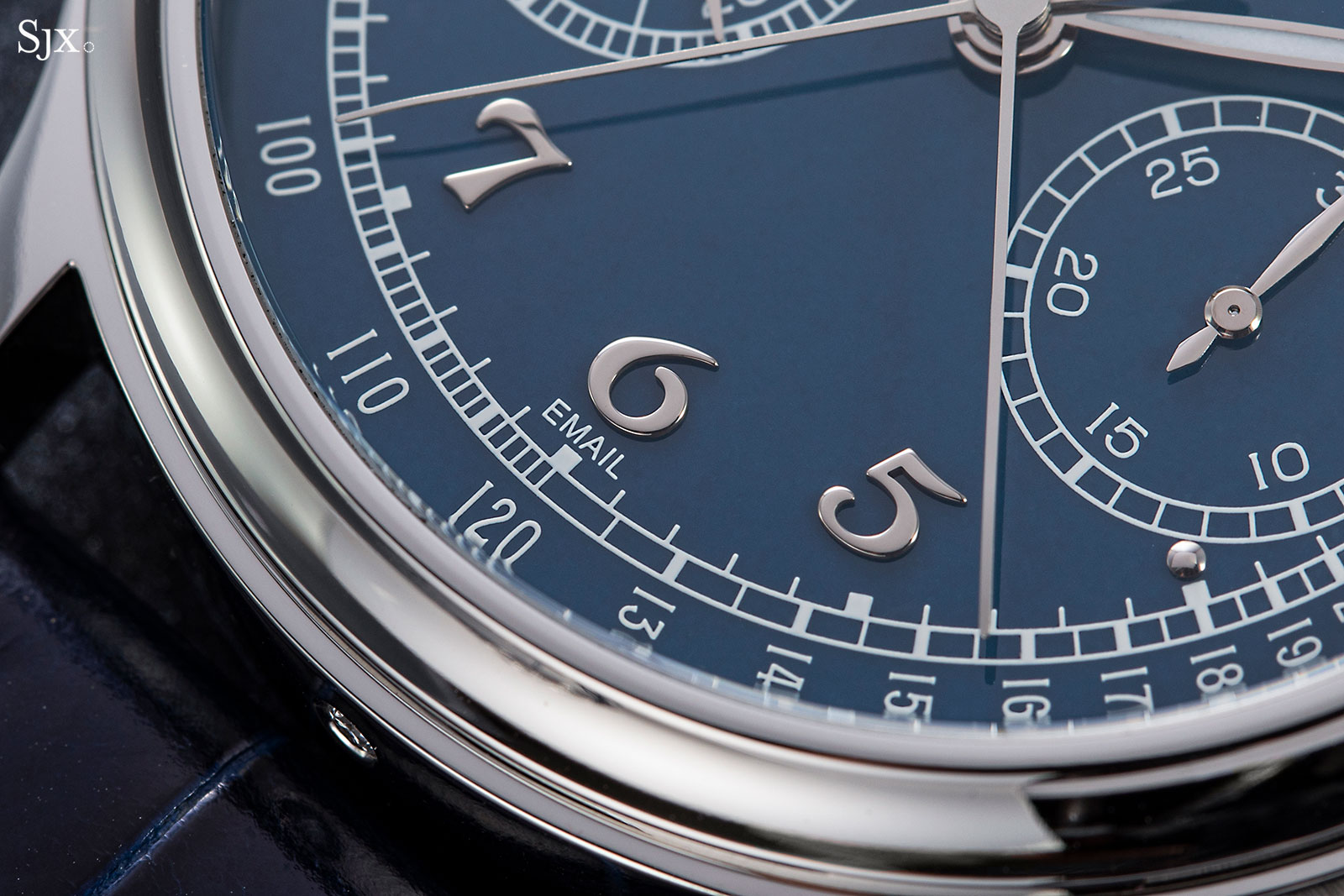
“Email” is French for “enamel”
I would, however, have liked some minor elements done differently. For instance, the hour and minute hands are filled with Super-Luminova, but the dial has none, which feels like a bit of a mismatch. And both split-seconds hands as well as the sub-dial hands are identical respectively – differentiating them from each other would have been a useful detail.
Lastly, the pair of split-seconds hands have a fine frosted finish that matches neither the other hands nor the numerals. This is common across all Patek Philippe chronographs, and most probably due to the delicate nature of the hands, which means they cannot be mirror polished and instead require a gentler, blasted finish.
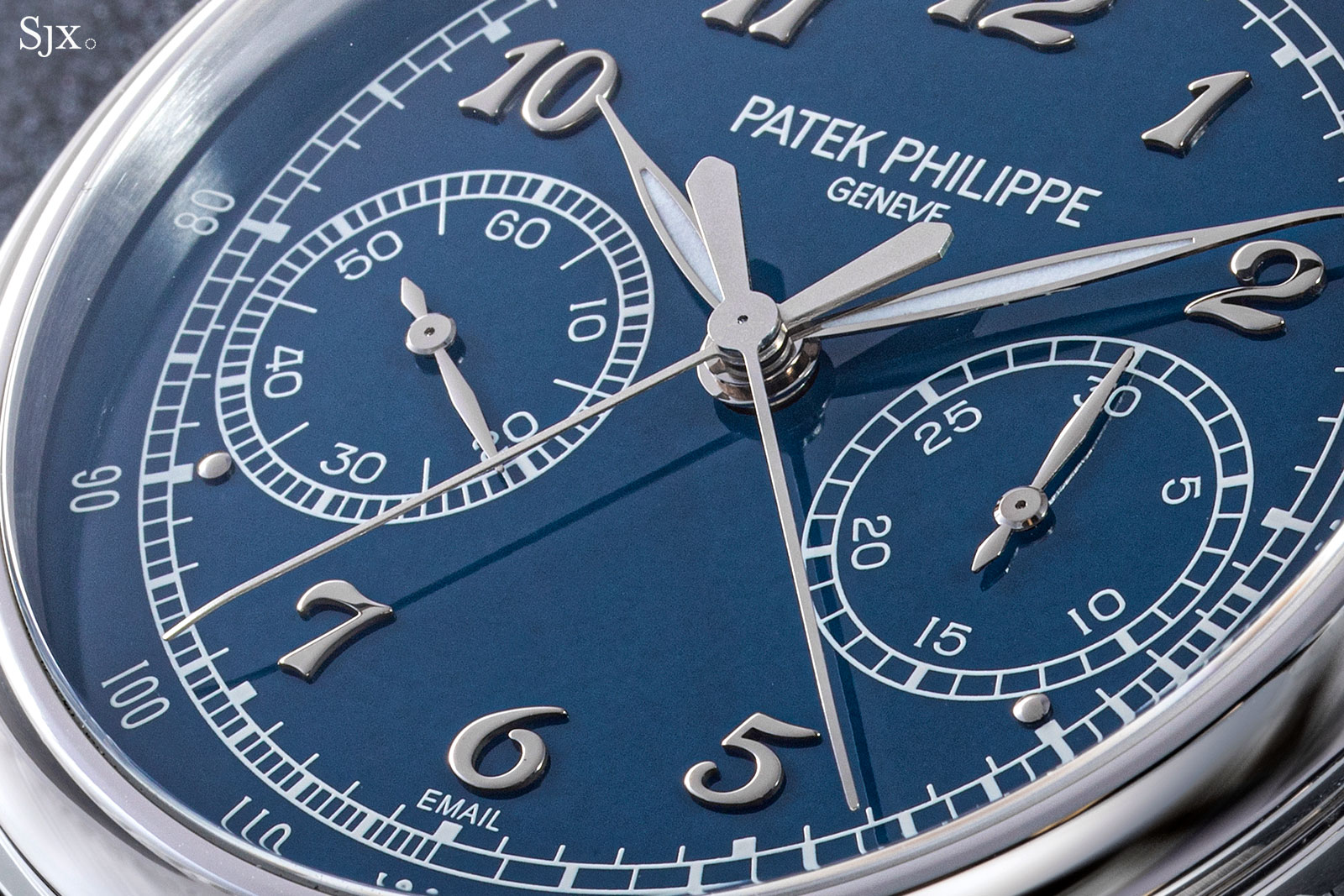
The hands reflect on the glass-like surface of the dial
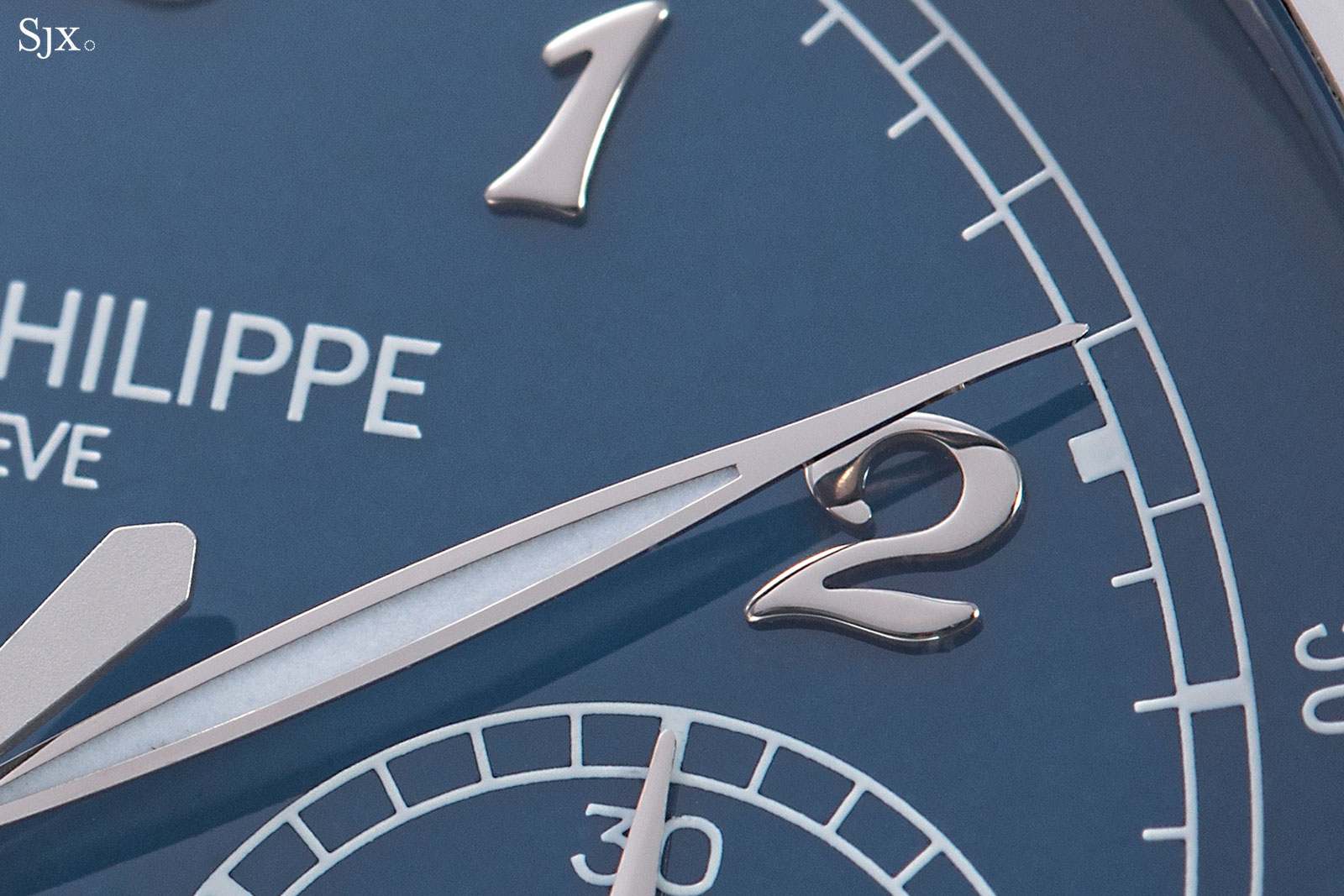
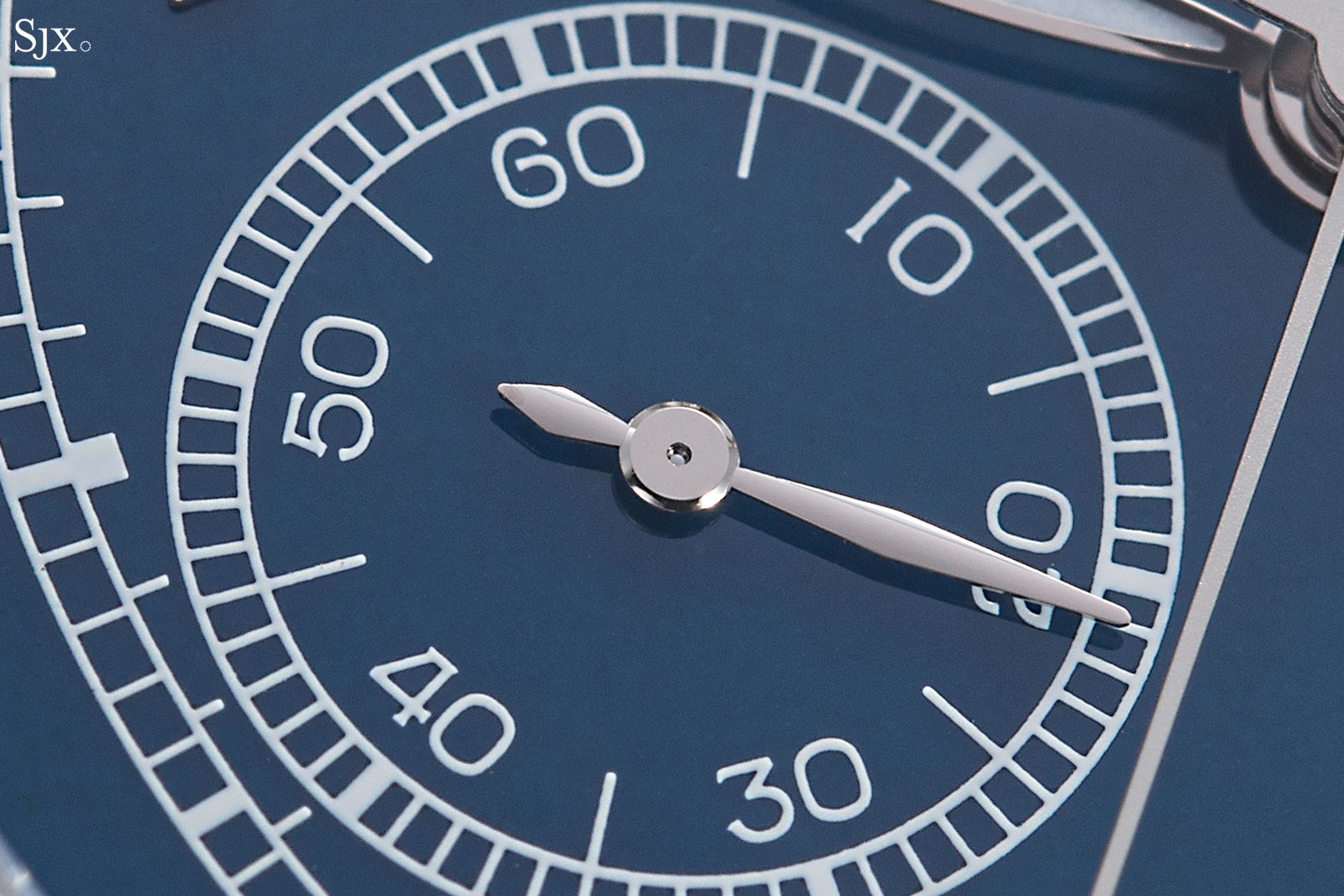
The hands on the registers have a pleasing, rounded profile and bevelled centres
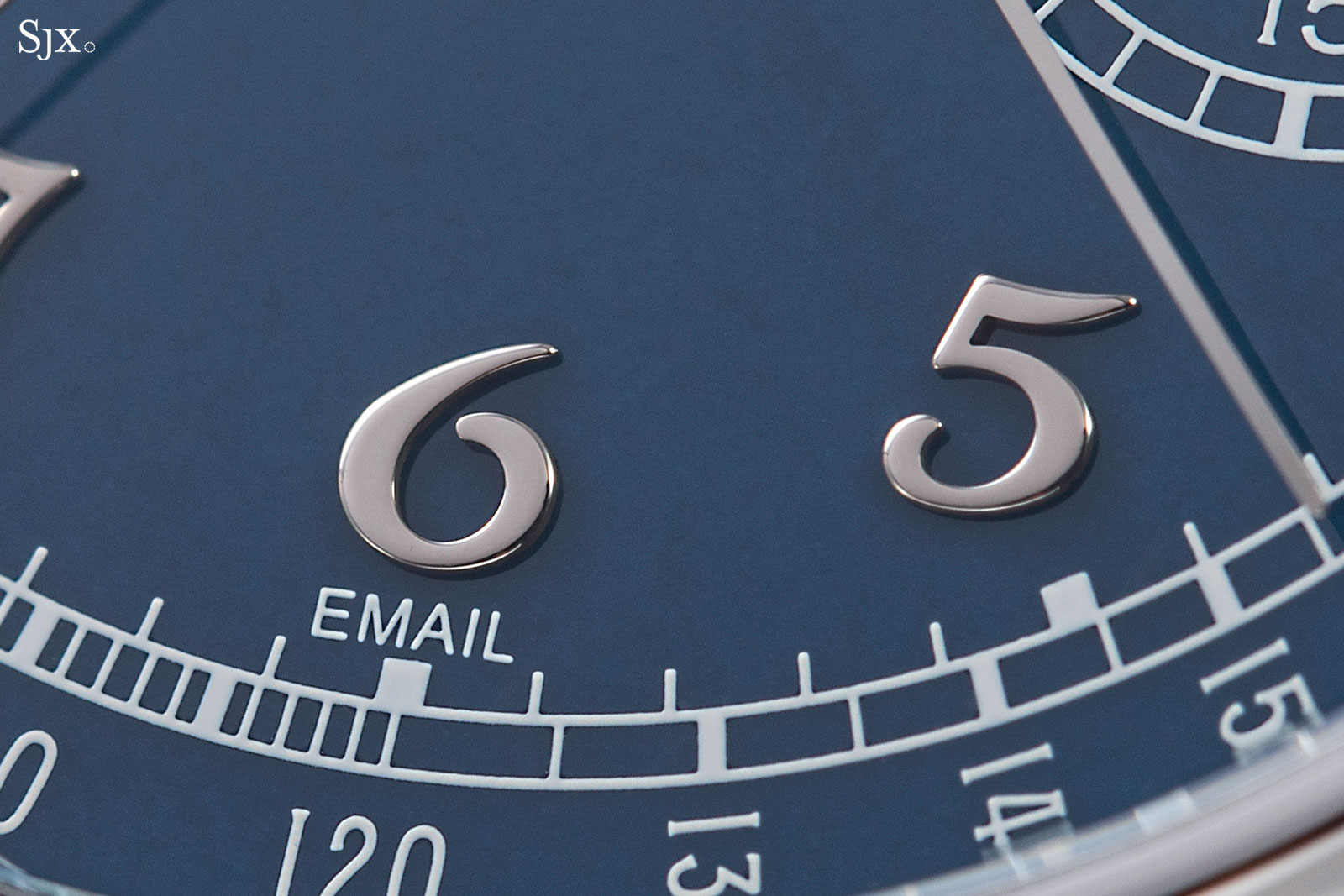
The applied numerals are delicately shaped
And inside
The movement inside is the CHR 29‑535 PS, which is a variant of the CH 29 found in the ref. 5270 and ref. 5172. Like Patek Philippe’s other movements, the CHR 29 boasts several innovations, many extremely small, that prioritise reliability and thinness.
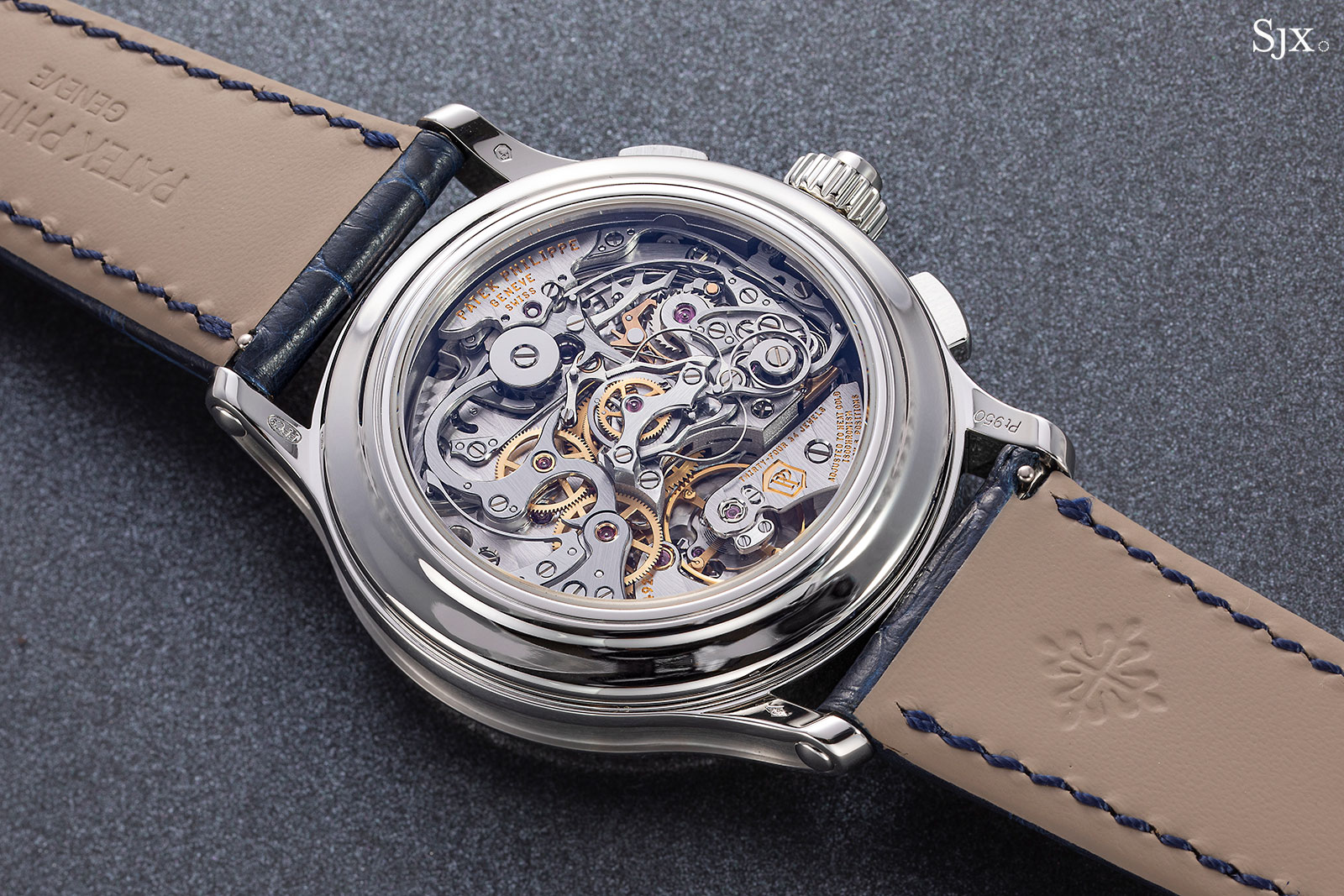
The CHR 29 is a technically accomplished calibre that features many thoughtful details. Amongst other things, the movement has an instantaneous 30-minute counter, a roller-and-cam mechanism to align the two seconds hands, and more robust isolator mechanism for the split-seconds that prevents “drag” when it’s running.
And it also has a one-piece clutch lever – a feature Patek Philippe has instilled in its chronograph movements since the very beginning – that provides more consistency of engagement for the chronograph.
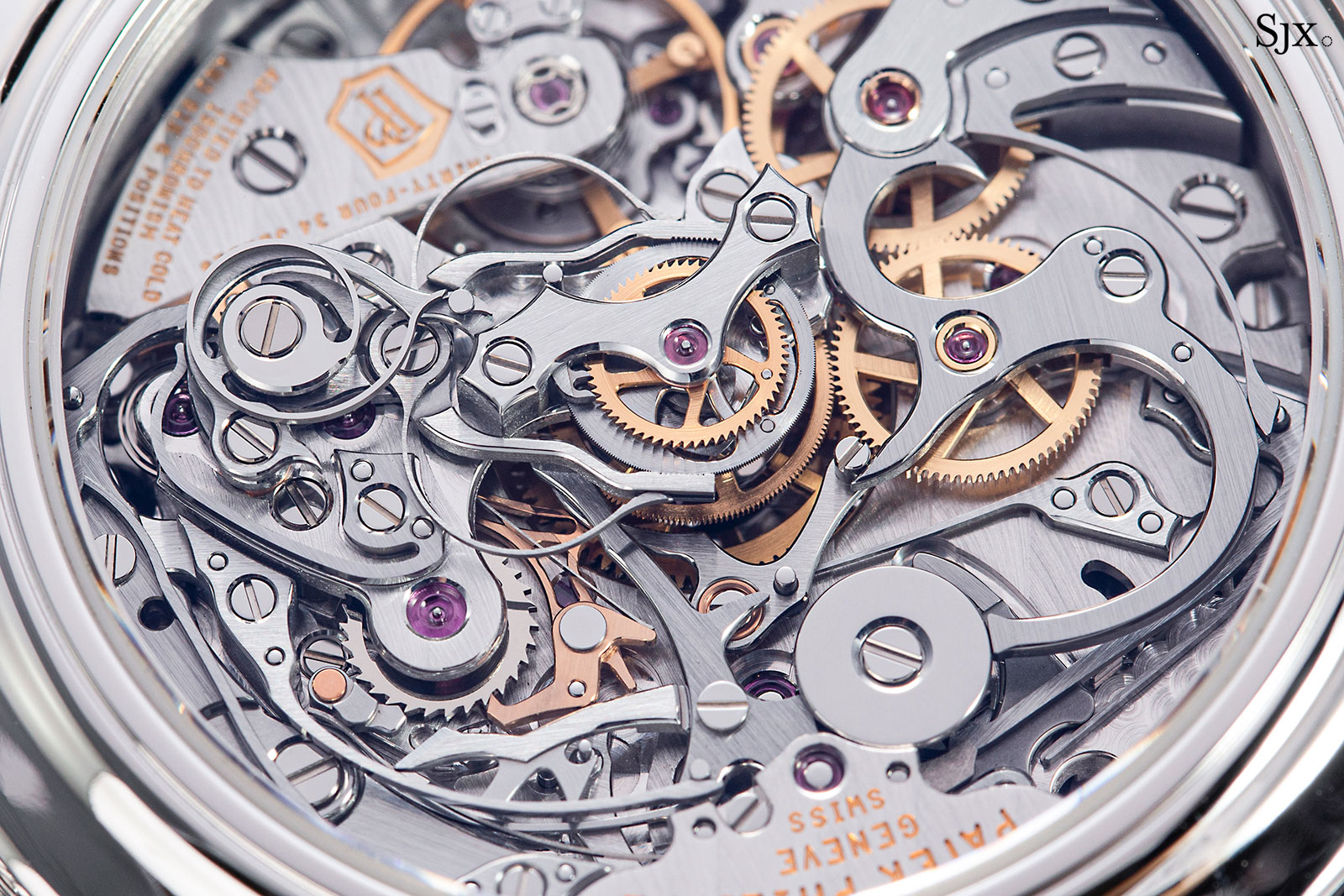
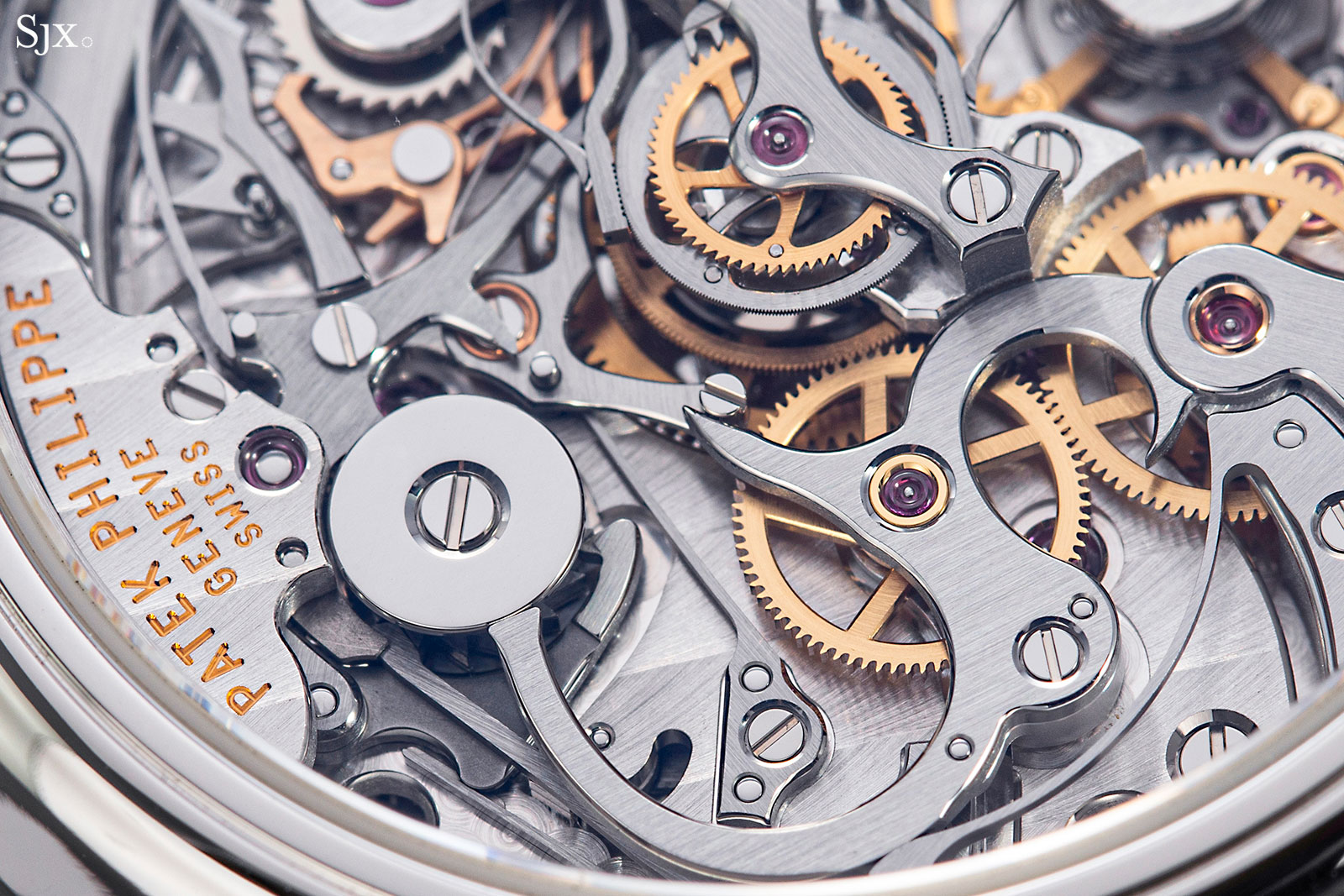
The one-piece clutch lever (lower right) with one end that resembles a bird’s head
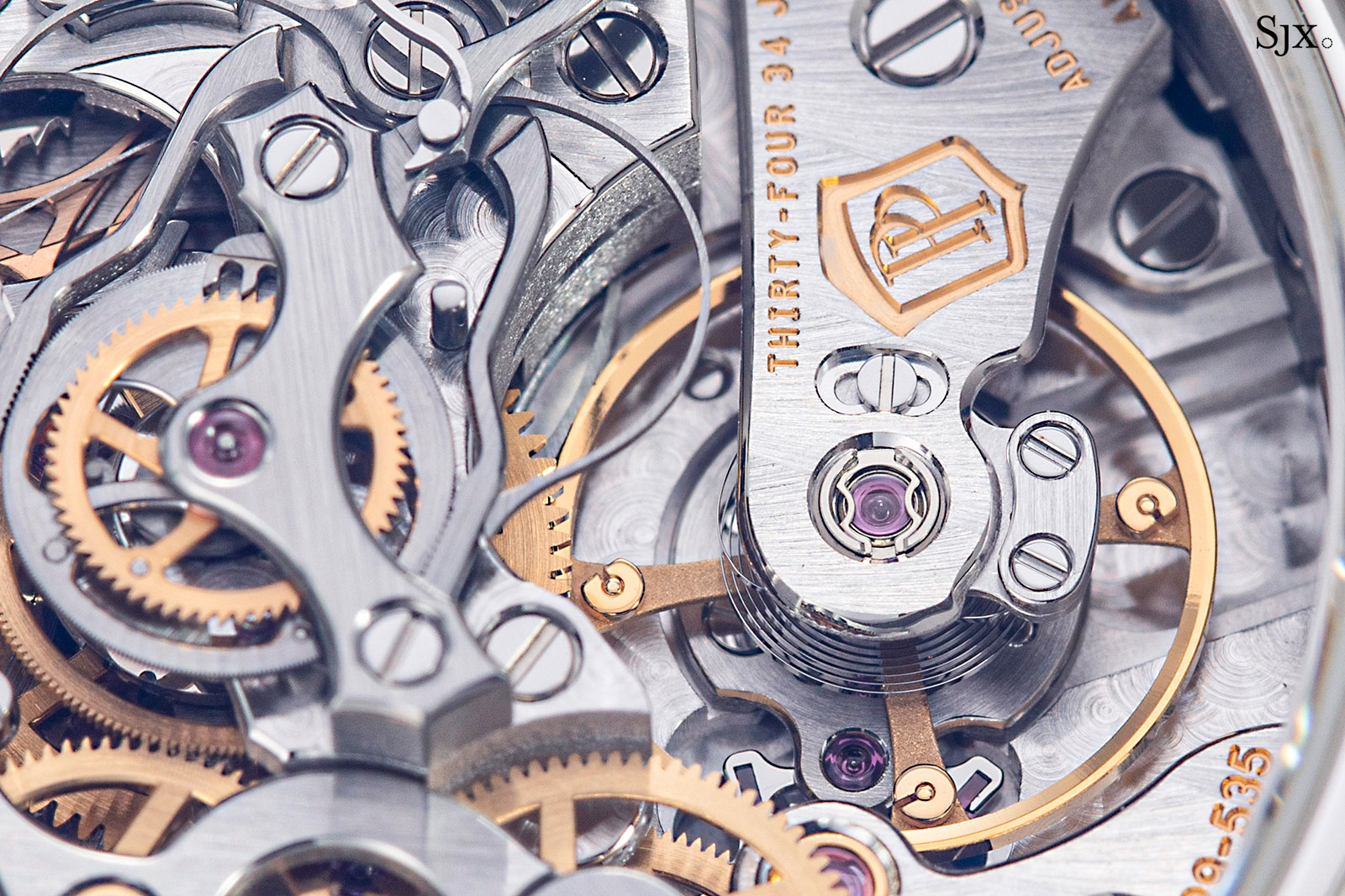
The Gyromax balance wheel with adjustable masses
Even the longstanding feature of Geneva-made chronograph movements – the steel cap on the column wheel that historically prevented the clutch from disengaging upon impact – has been given a secondary purpose as a means to adjust the meshing of the clutch with the teeth of the column wheel.
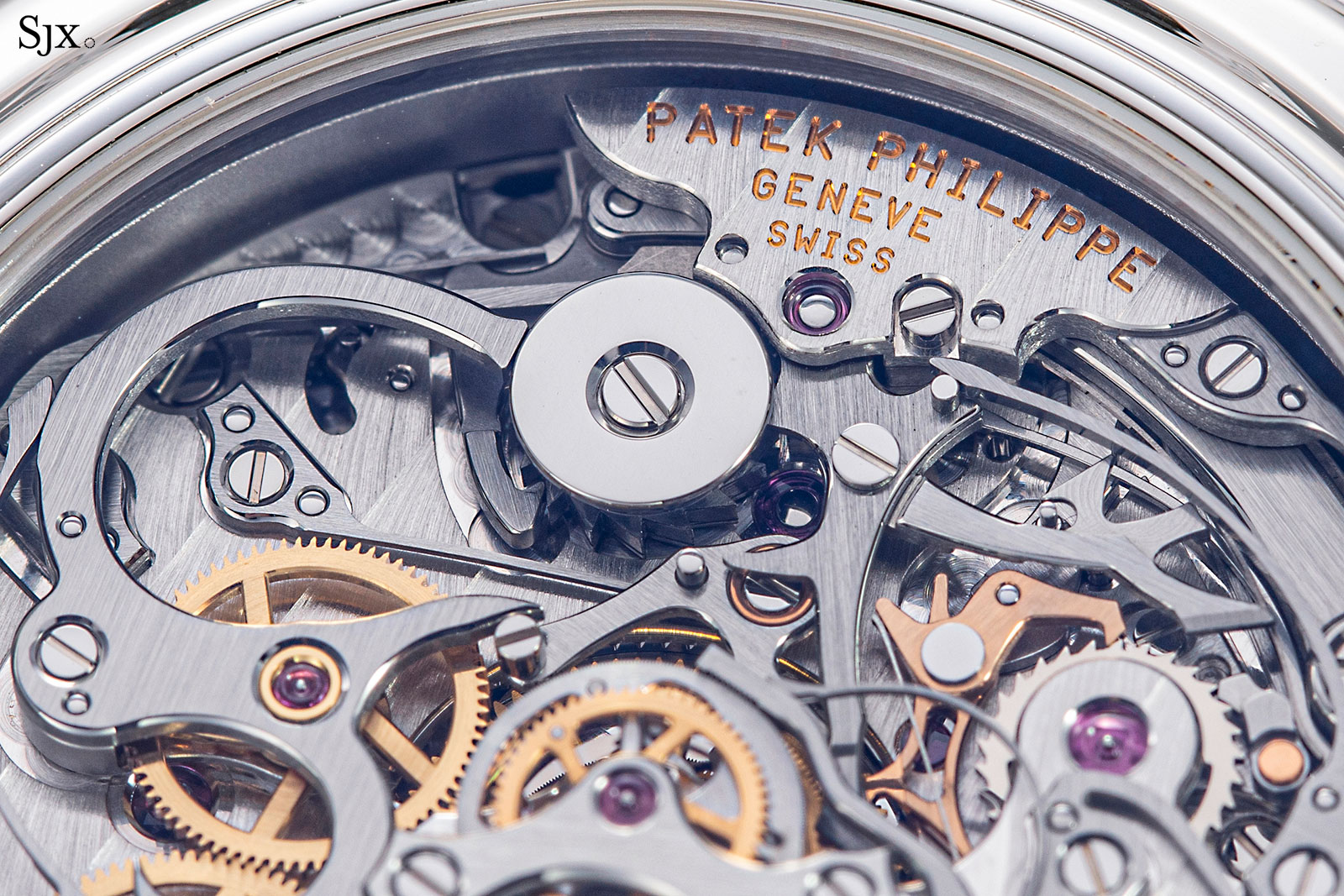
The polished steel disc sits on the column wheel
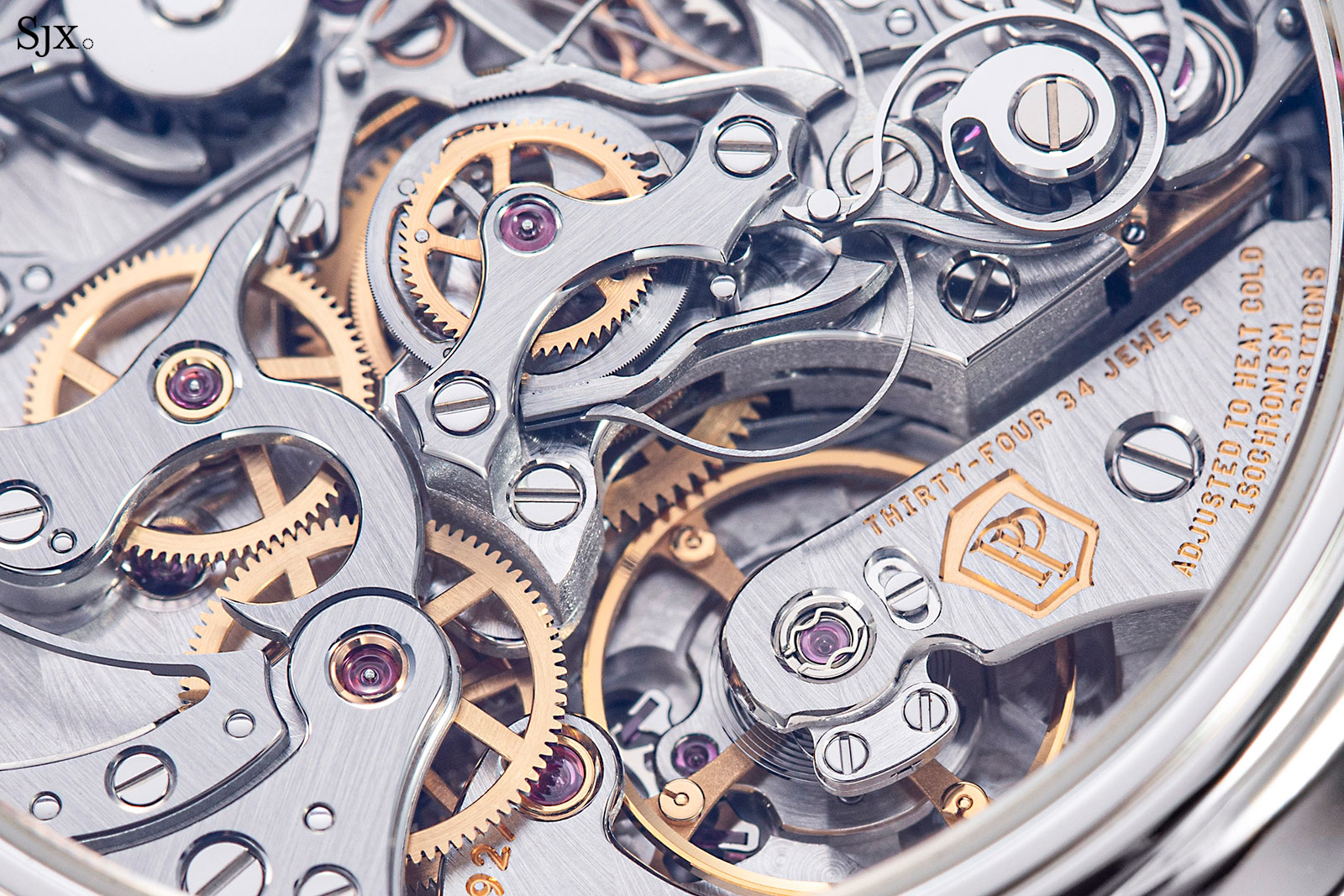
As far as traditionally-constructed split-seconds chronographs go, the CHR 29 is probably the most advanced. But some of the grace found in older movements is lost.
It has an extremely complex appearance, with numerous snaking levers, but much of the styling feels modern and a bit too aggressive. The bridge for the split-seconds, for instance, has a sharp-cornered outline that allows for well-defined bevelling, but giving it a shape that resembles a weapon.

A closeup of the split-seconds bridge
Patek Philippe is sometimes criticised for the movement finishing – and the decoration on the most basic models is arguably lacking – but the high-end movements are finely and appropriately treated.
The decoration of the CHR 29 is clearly better than the finishing on the base-model ref. 5172 chronograph and other simpler watches. The finishing is excellent in a restrained and consistent manner that was no doubt done with a little help from machines and then refined by hand.
The bevels of the bridges and chronograph levers are mirror polished and do not betray any machining marks, unlike the movements in more basic watches. Examining the chronograph mechanism reveals a high level of finish, even the sharply-pointed tips of levers.
Even though the finishing is not as artisanal as say Voutilainen or Atelier de Chronometrie, the movement is more advanced, so it is arguably more balanced in terms of decoration and technology.
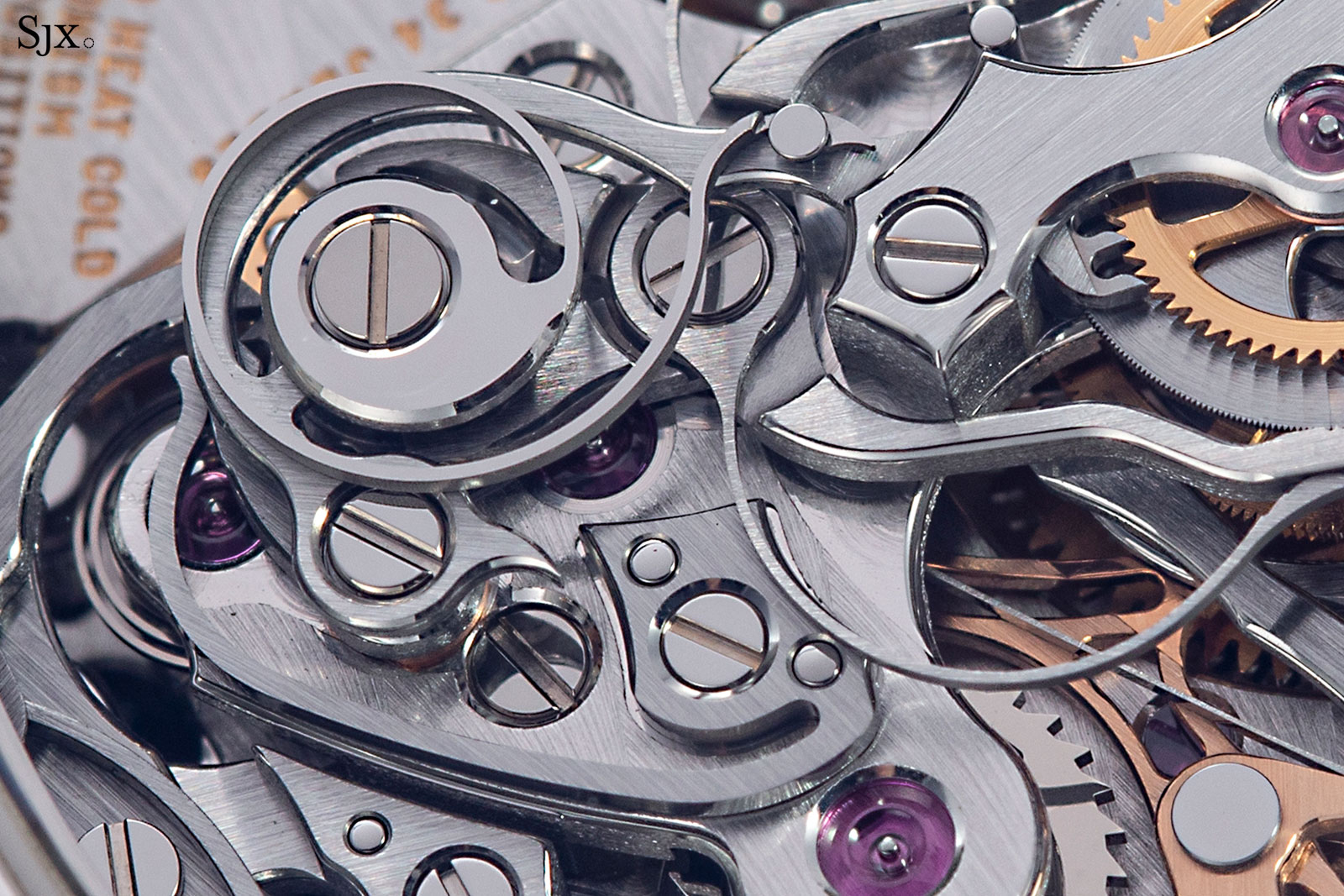
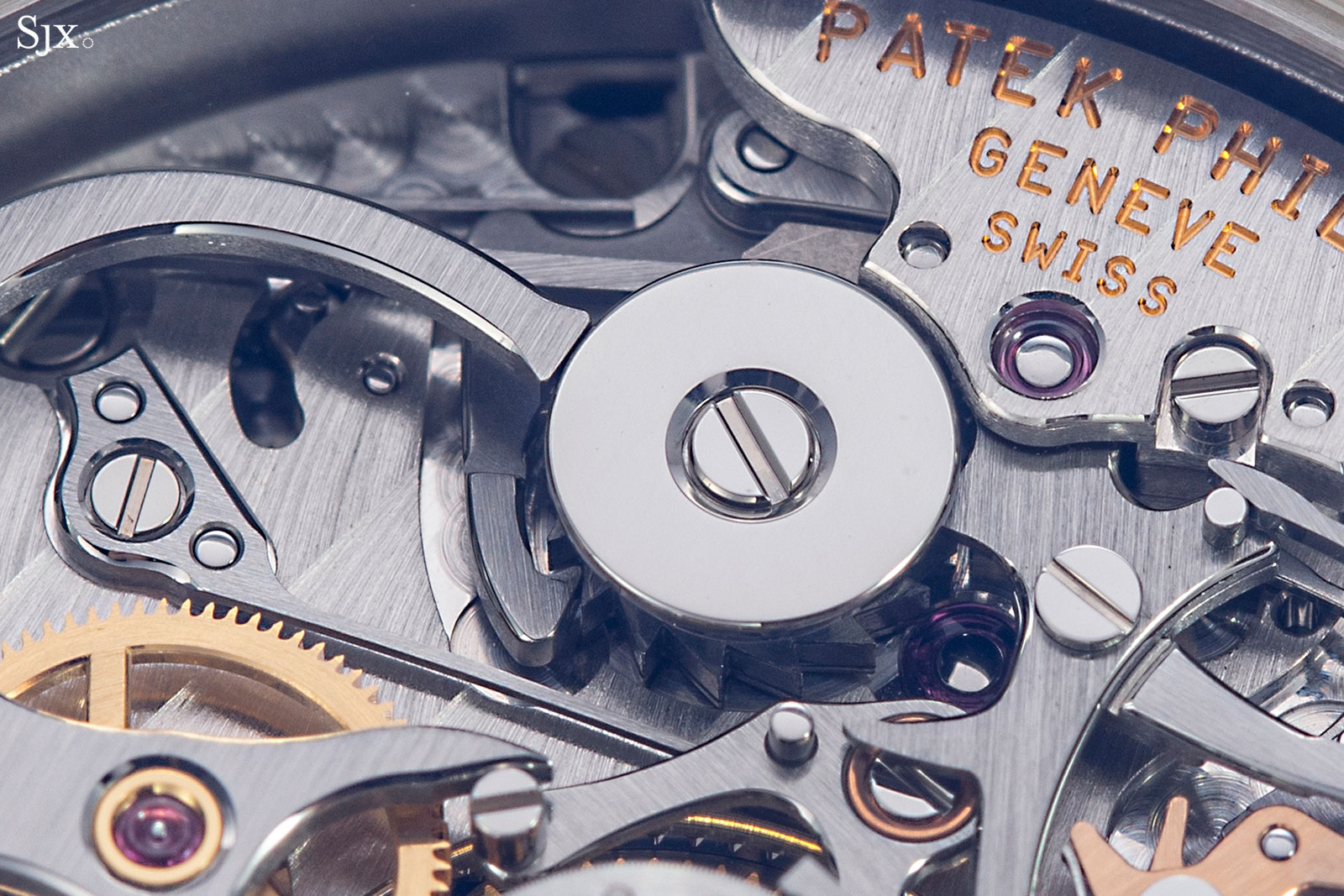

Concluding thoughts
The ref. 5370 is an attractive watch that is impressively made, albeit a little big. The look evokes enough of Patek Philippe’s historical watches to be considered classical, while incorporating modern elements to make it a little more, well, modern. Though niggling details like the matte split-seconds hands aren’t quite right, the overall look and feel works well.
In terms of technical quality it is also passes the test. The movement finishing is good, while the construction is better.
And the colour – I did originally prefer the black dial, I can see why the blue dial has more appeal, especially for someone who already owns a bunch of watches with black dials.
Lastly there’s the price. The ref. 5370P is more expensive than the competition by a wide margin, so it isn’t great value. But factor in the brand, which has tremendous value, and it is decent value, and also probably one of the most compelling watches priced below US$250,000 in the Patek Philippe line up.
Key Facts and Price
Patek Philippe Split-Seconds Chronograph
Ref. 5370P-011
Diameter: 41 mm
Height: 13.56 mm
Material: Platinum
Crystal: Sapphire
Water resistance: 30 m
Movement: CHR 29-535 PS
Functions: Hours, minutes, seconds, and split-seconds chronograph
Winding: Manual wind
Frequency: 28,800 beats per hour (4 Hz)
Power reserve: 65 hours
Strap: Alligator leather
Availability: Now at boutiques and authorised retailers
Price: 232,000 Swiss francs
For more information, visit Patek.com.
Back to top.

